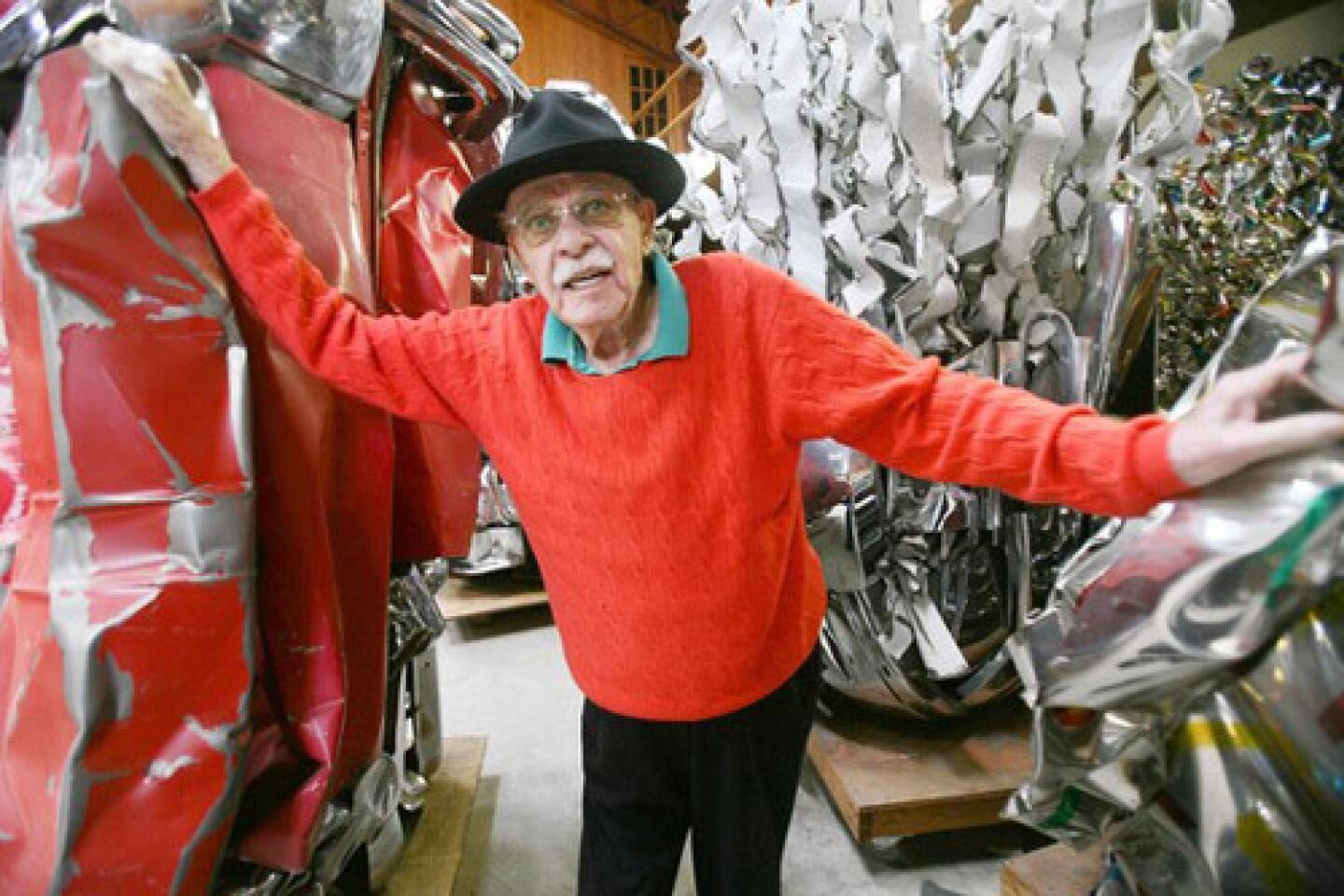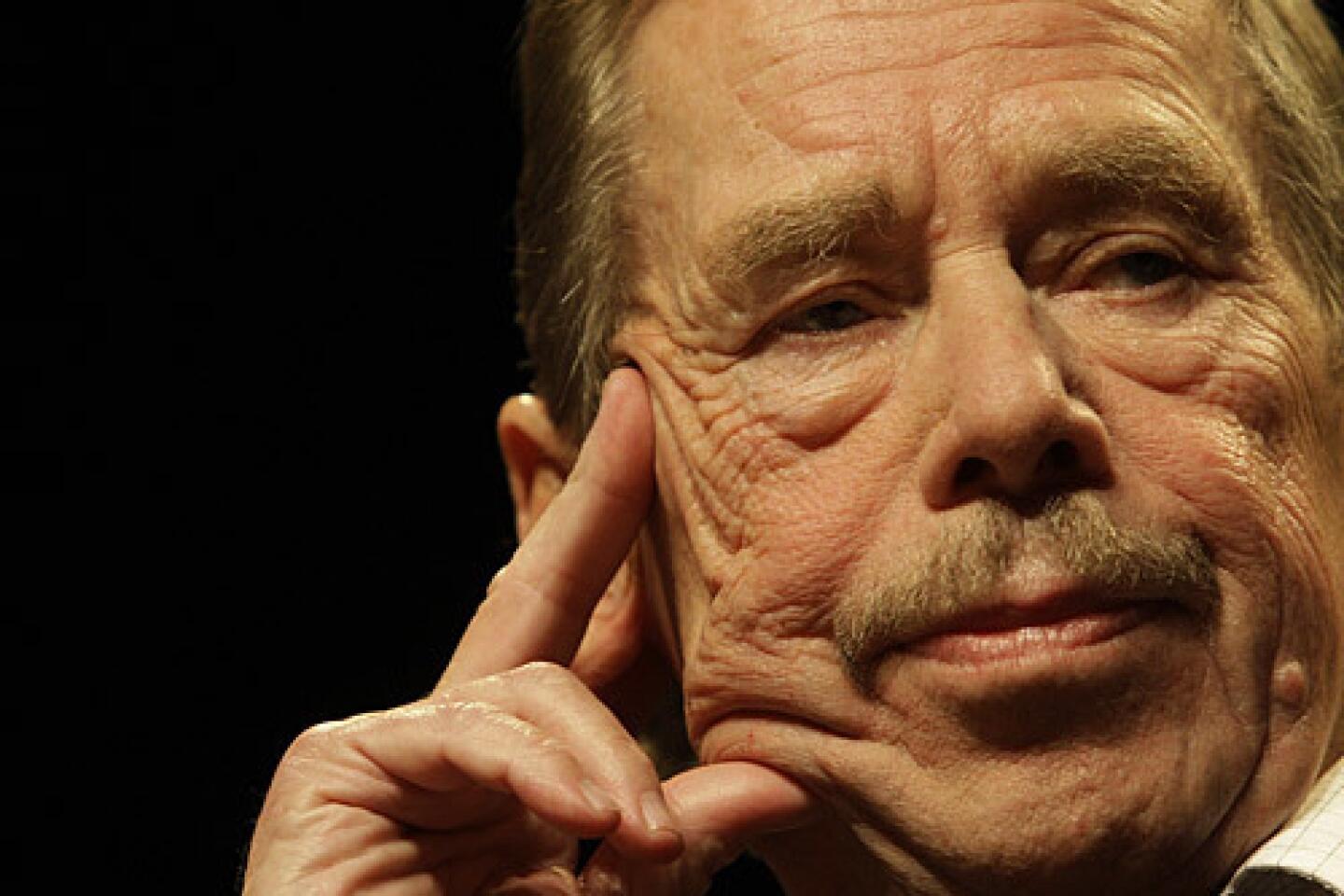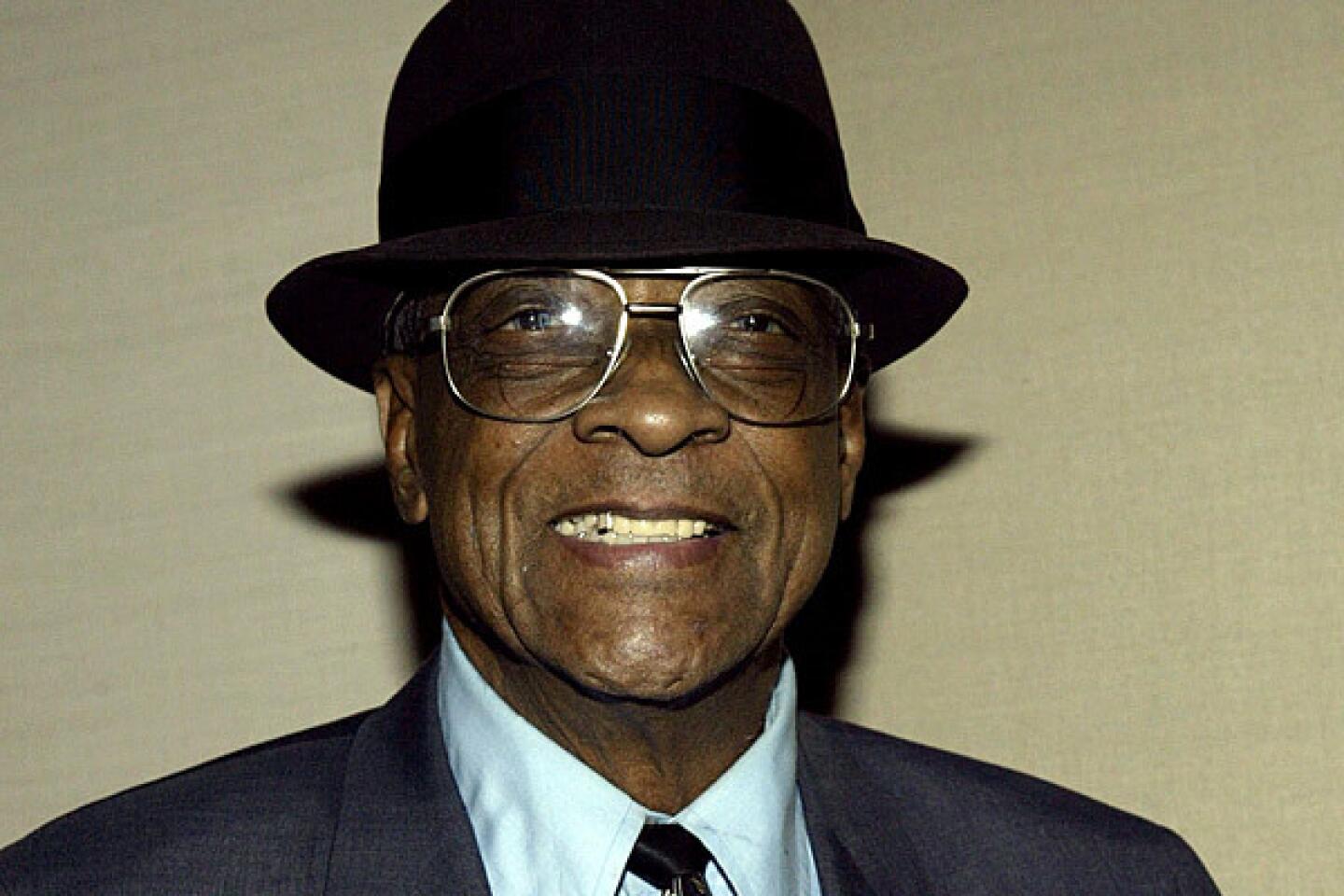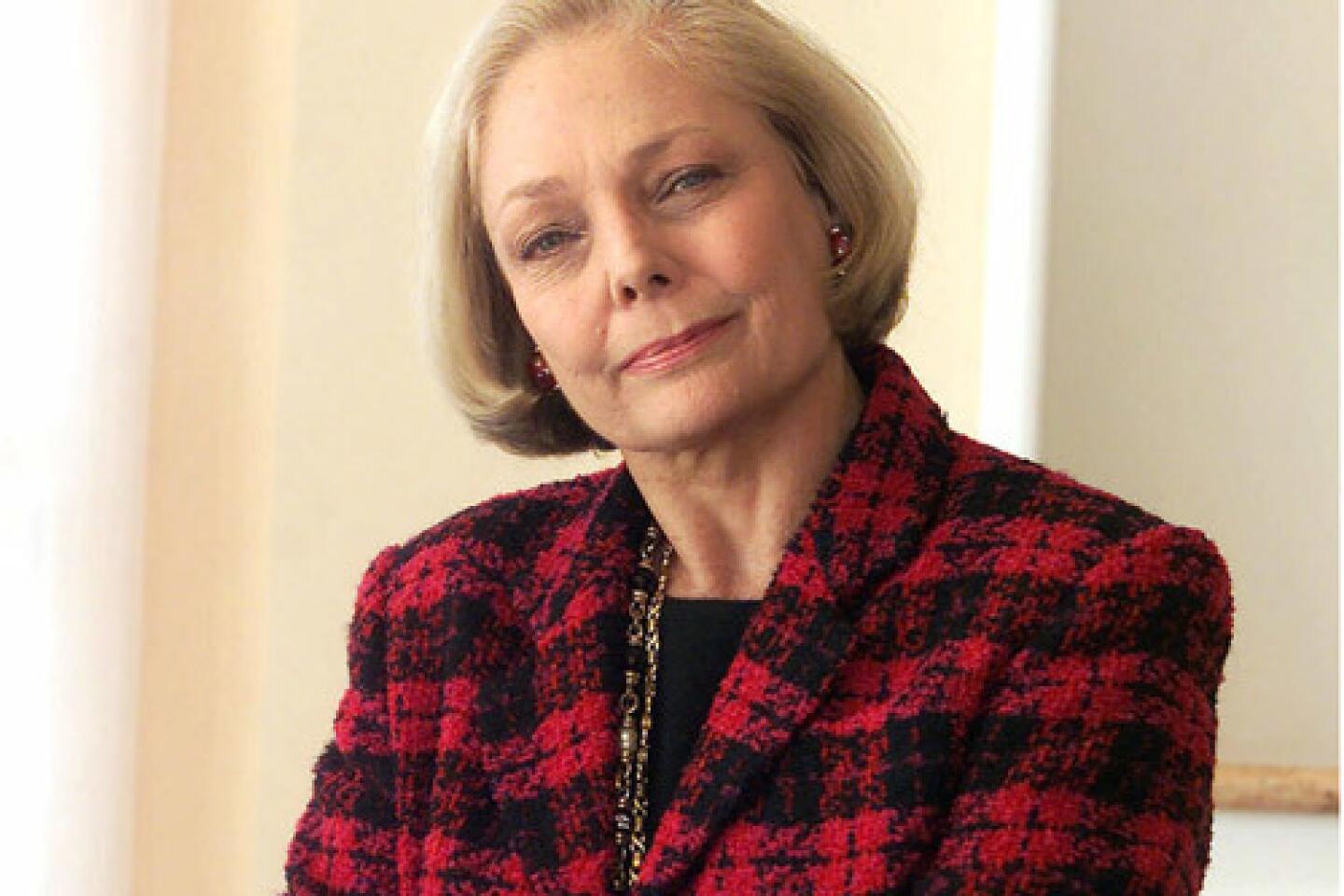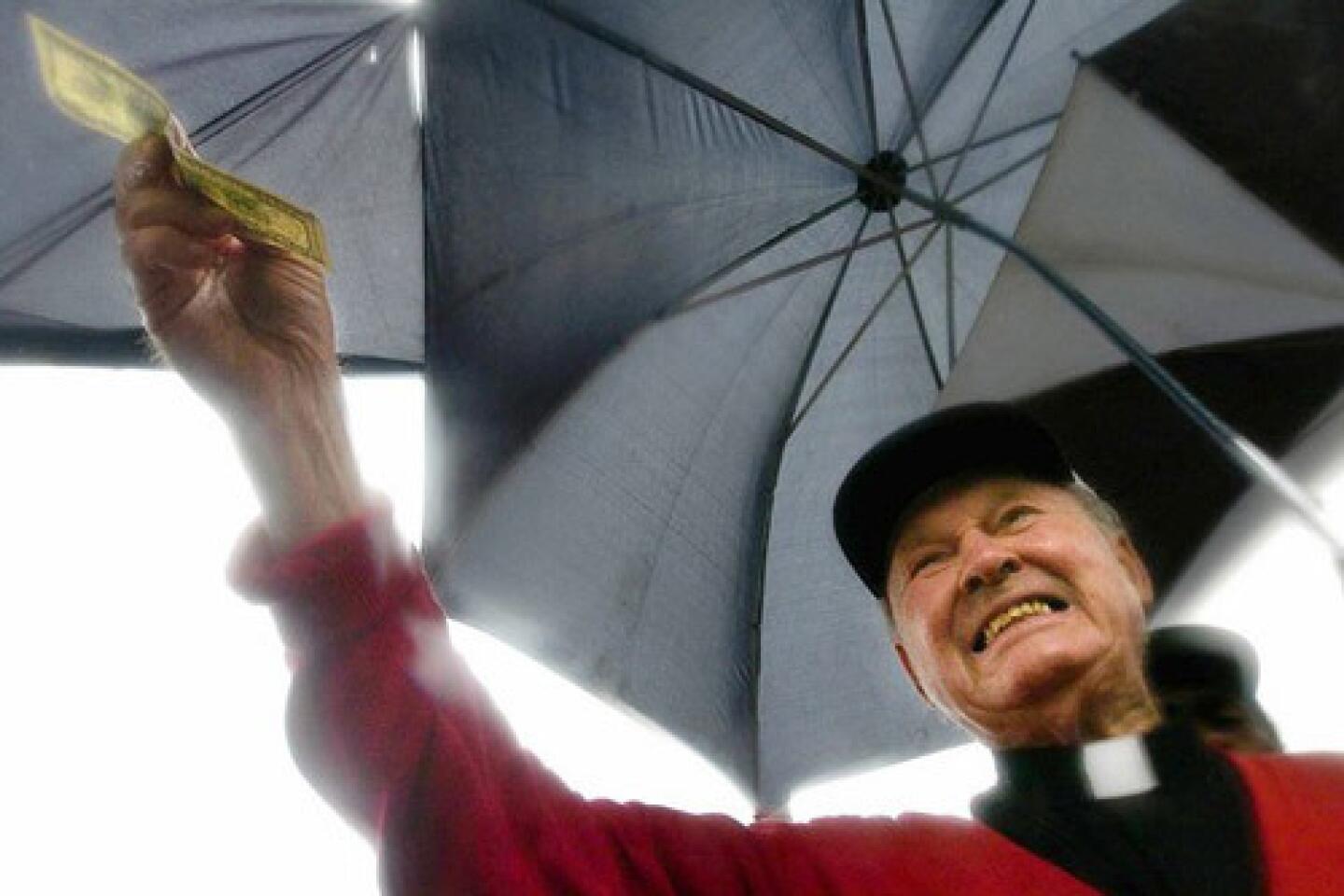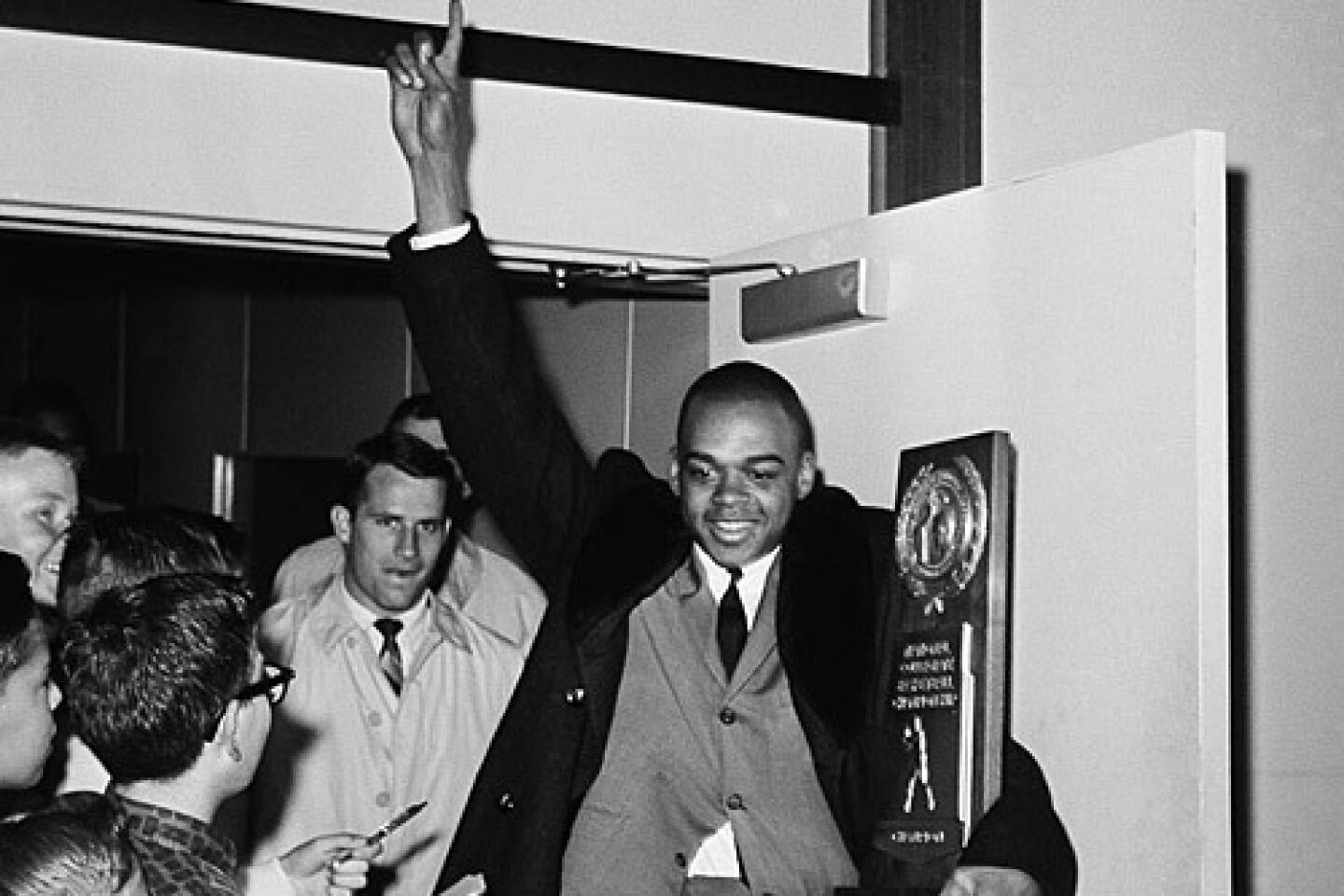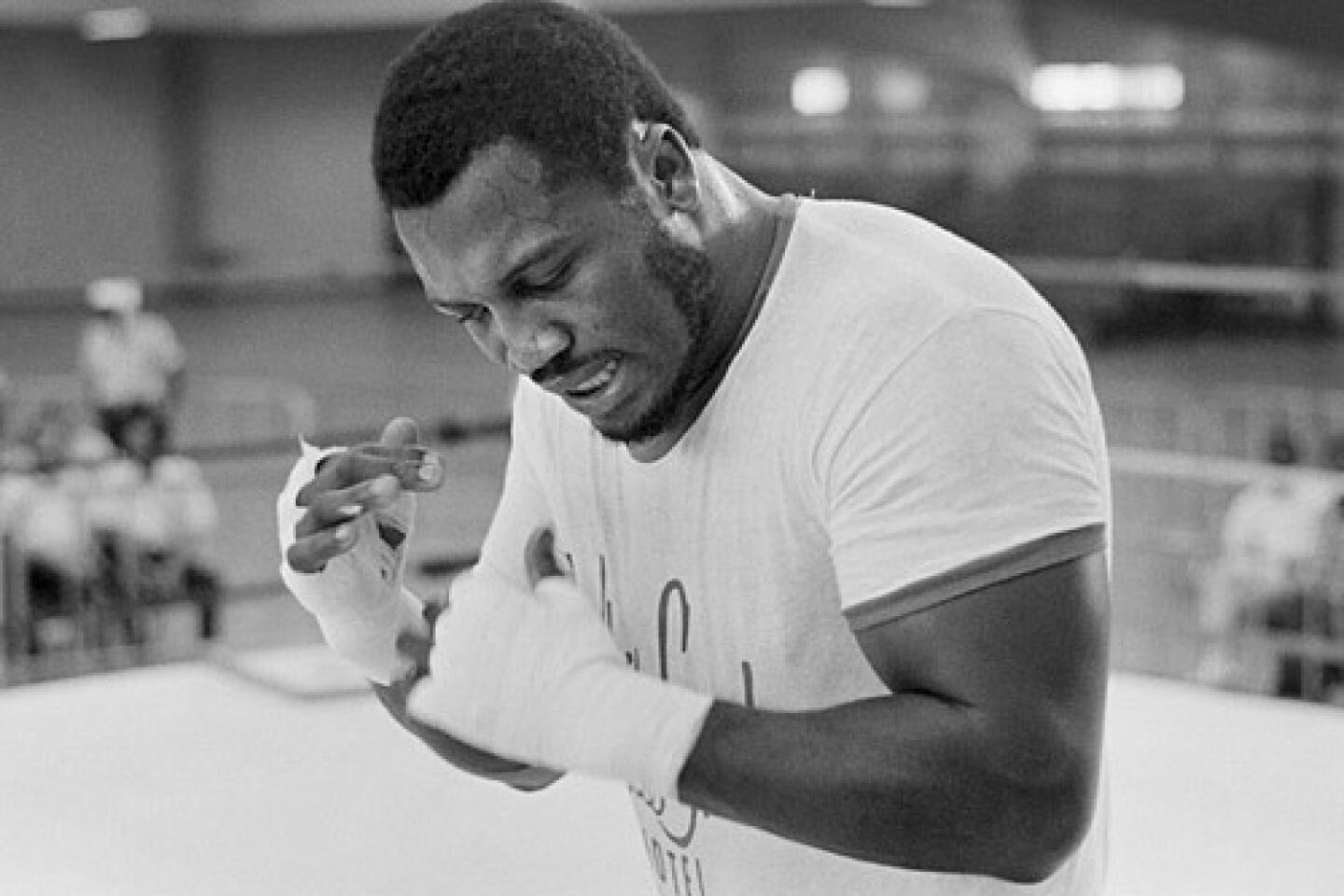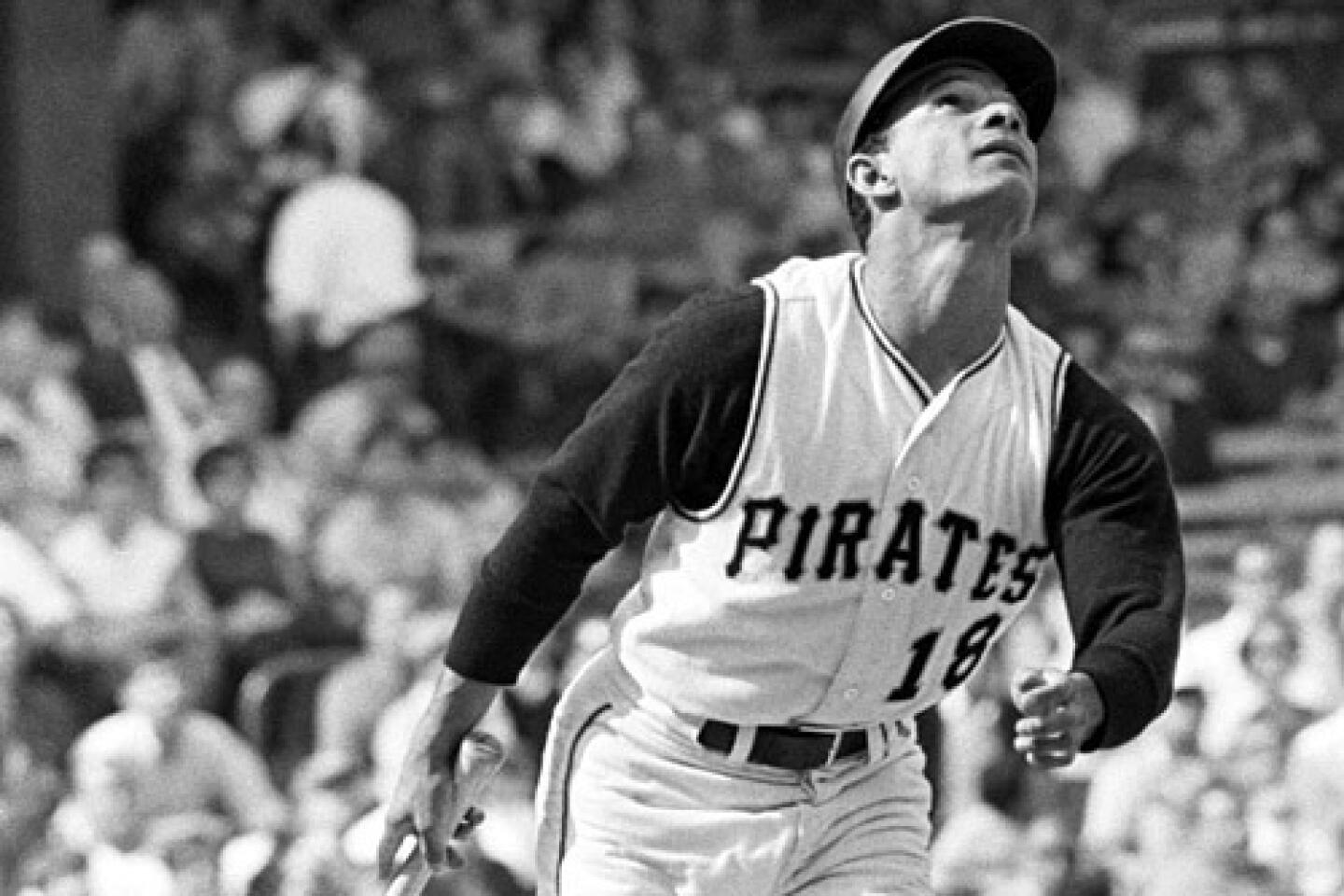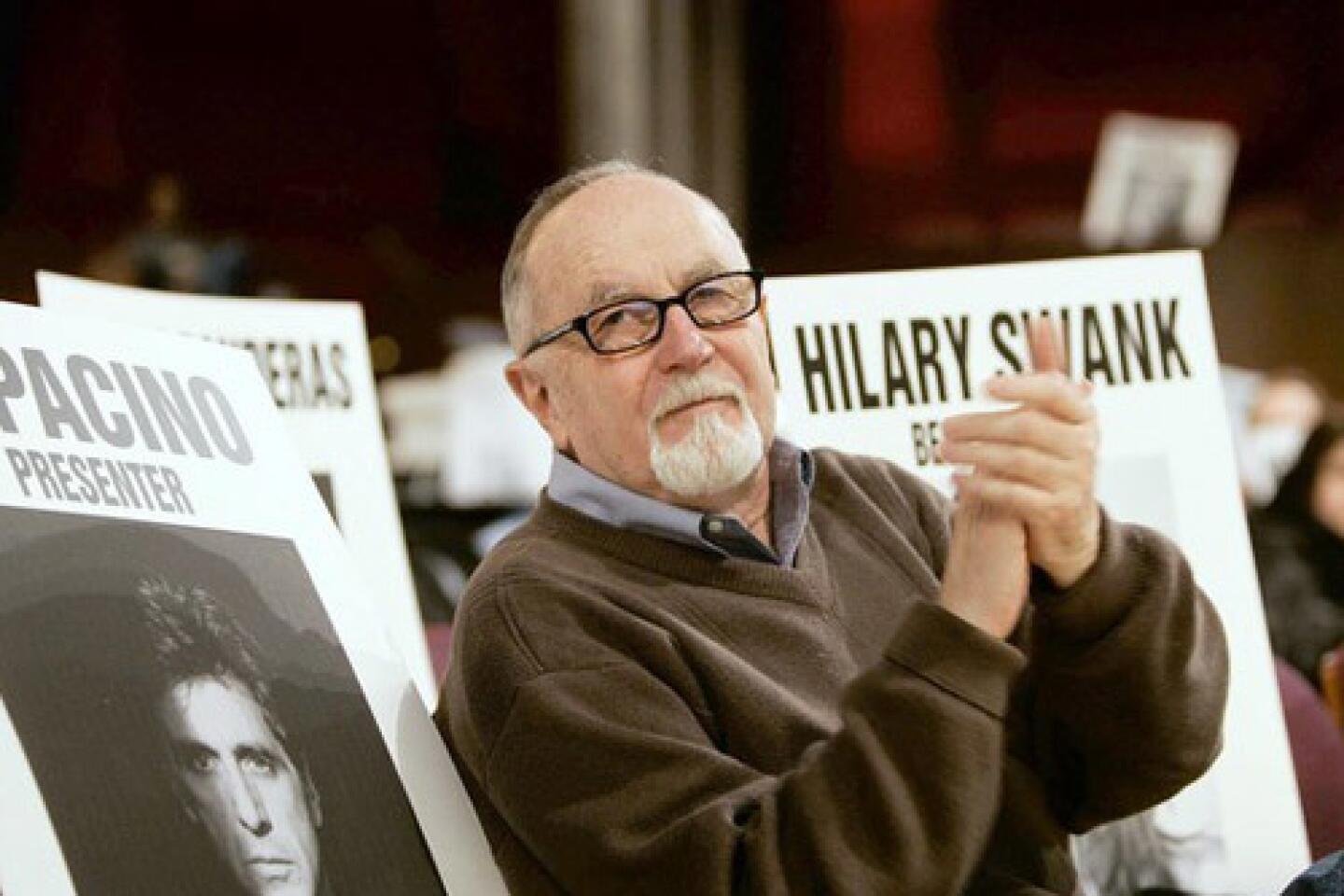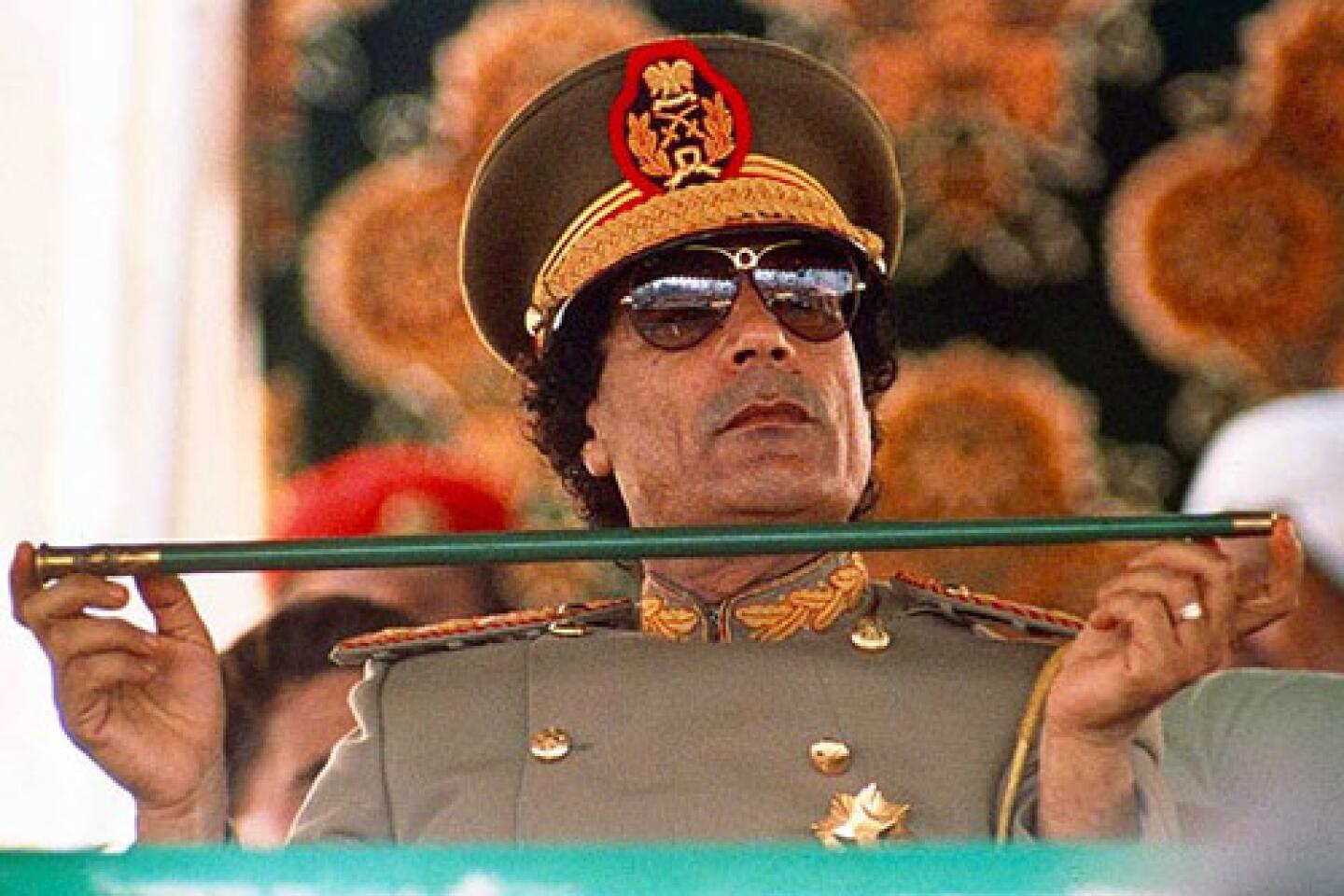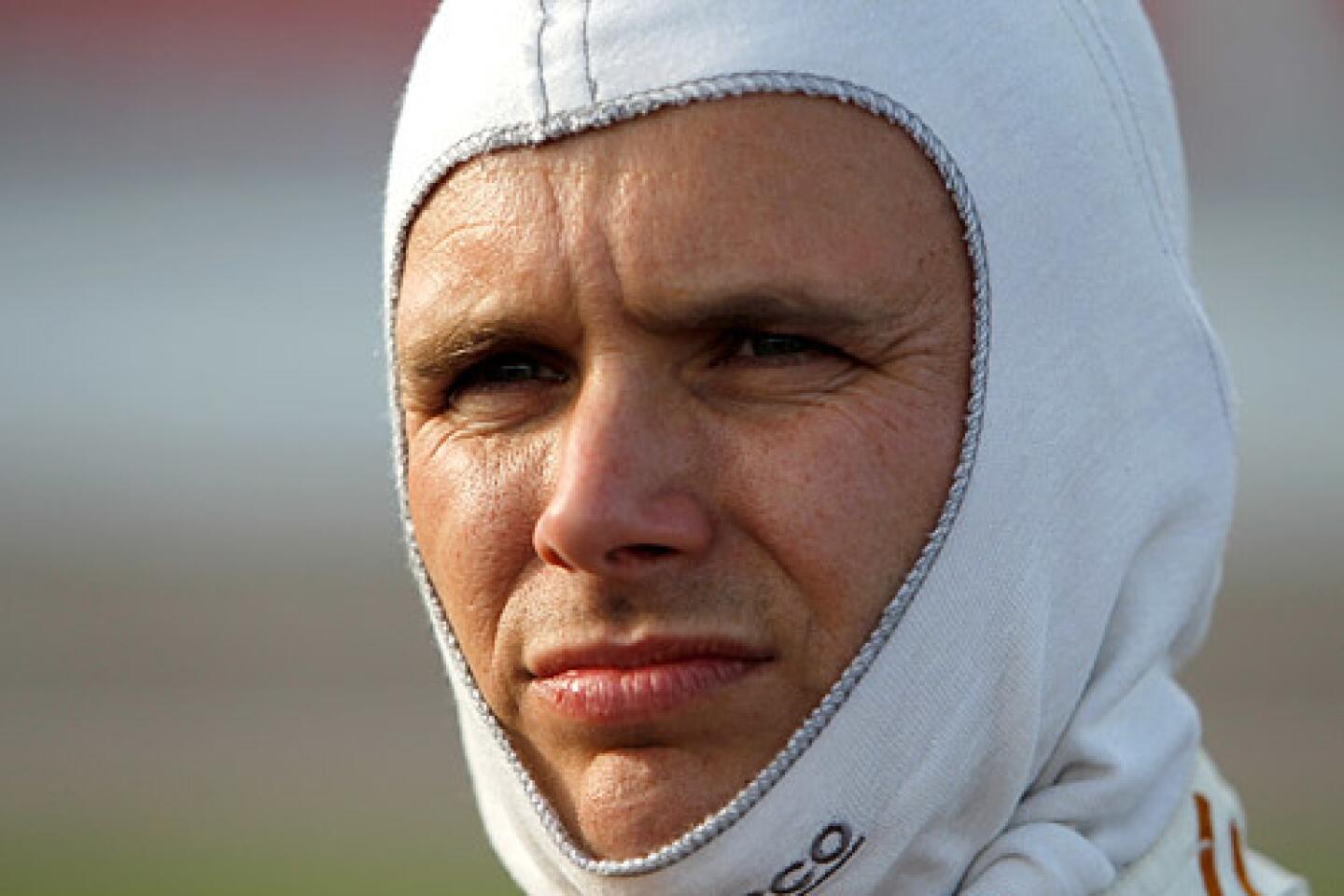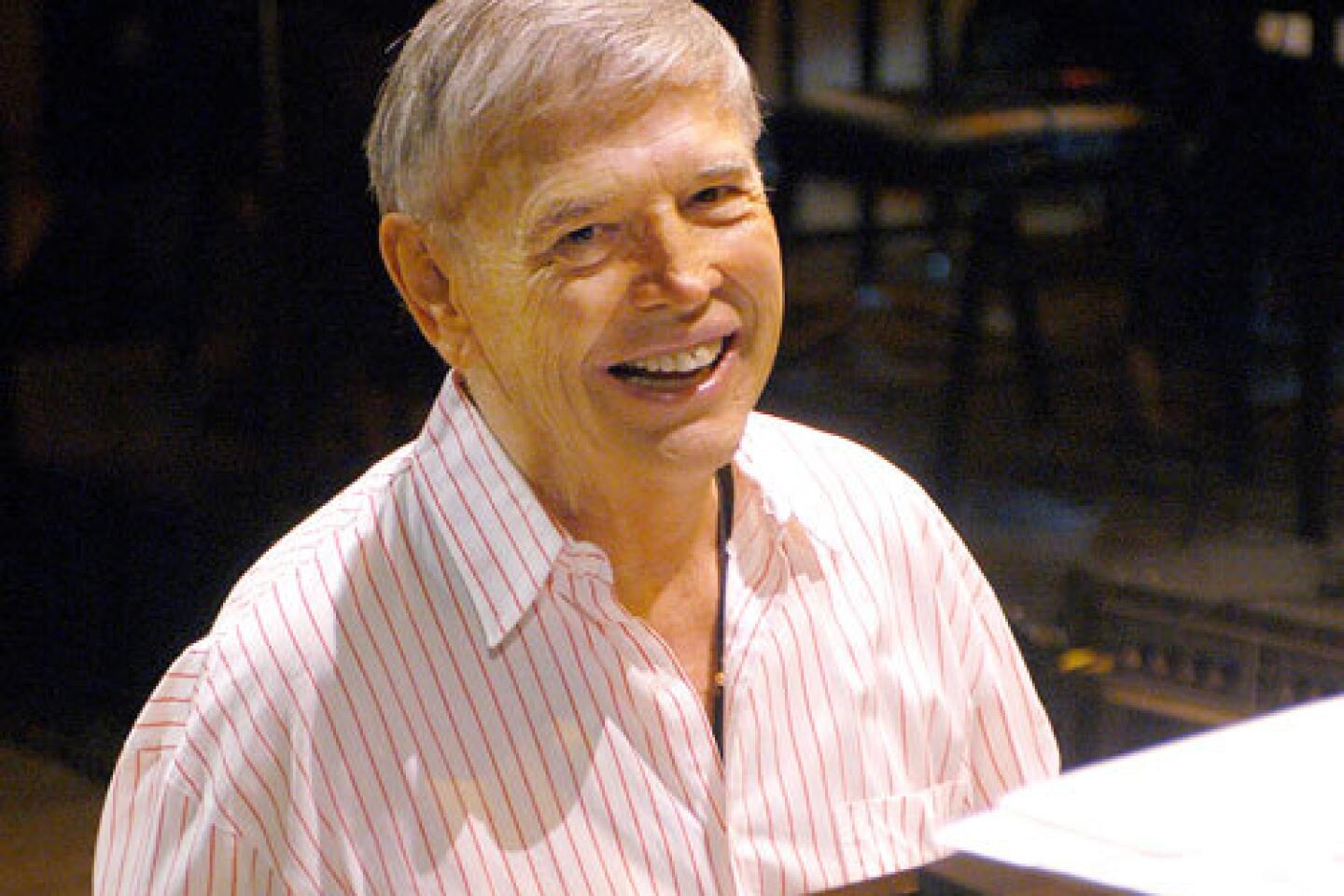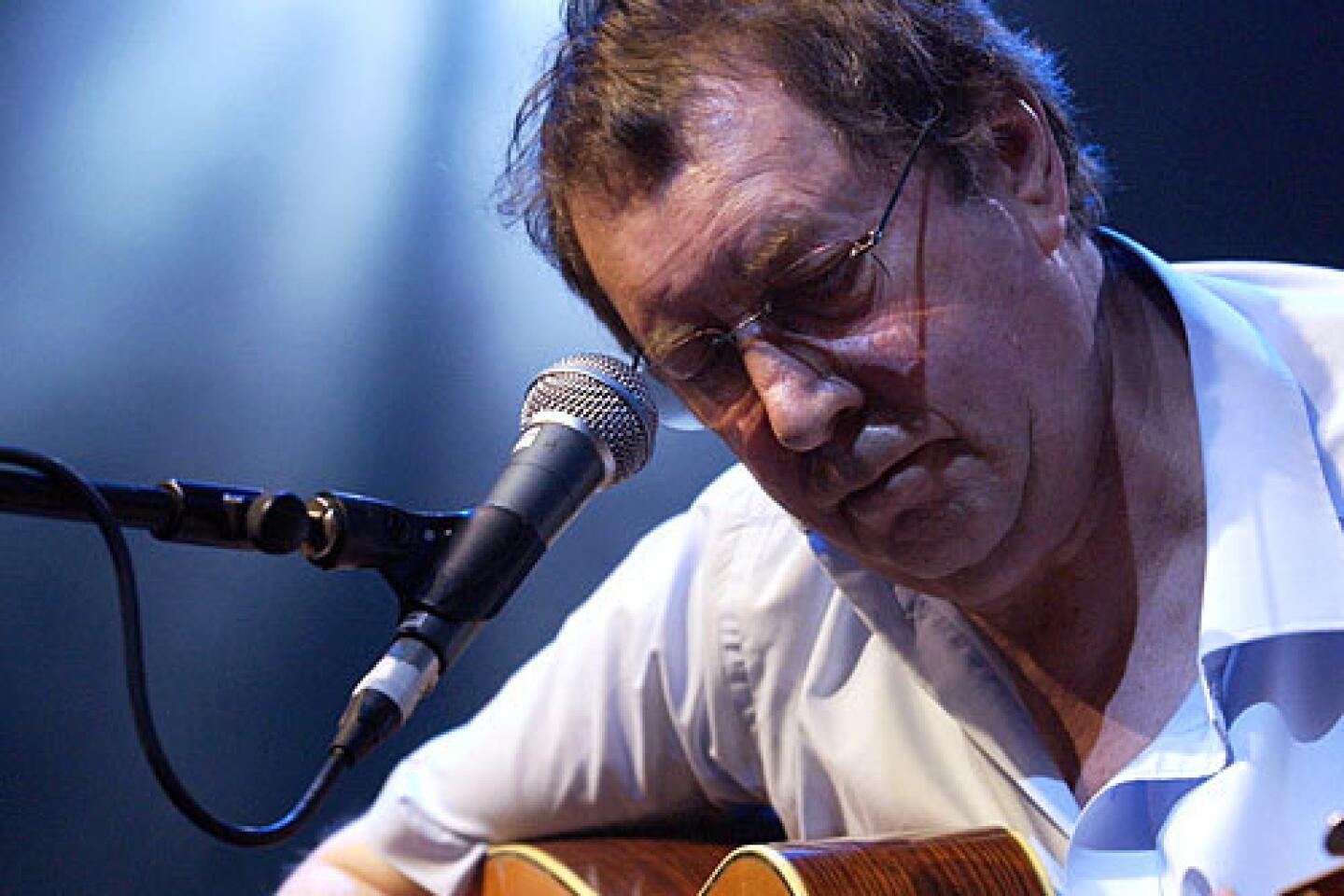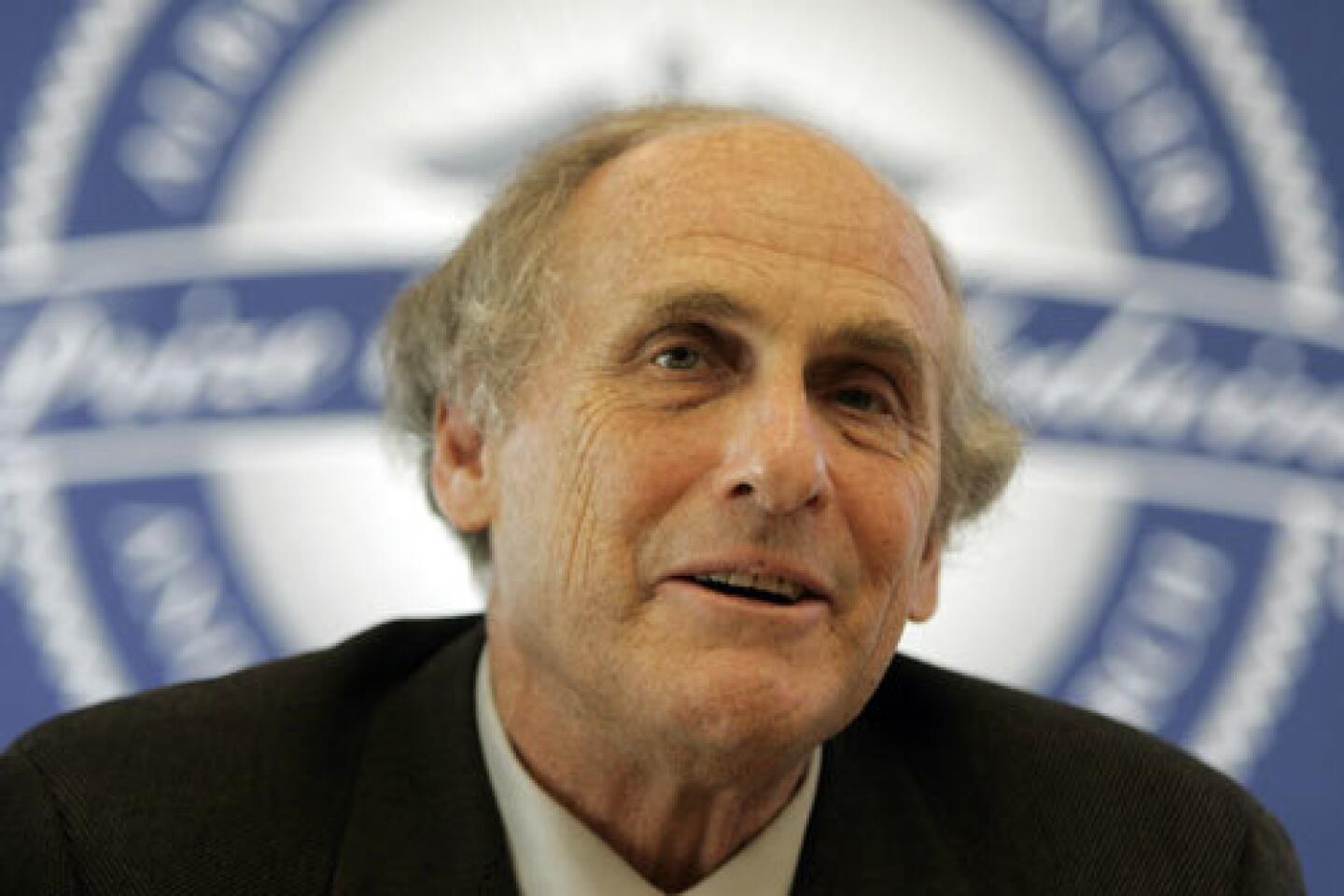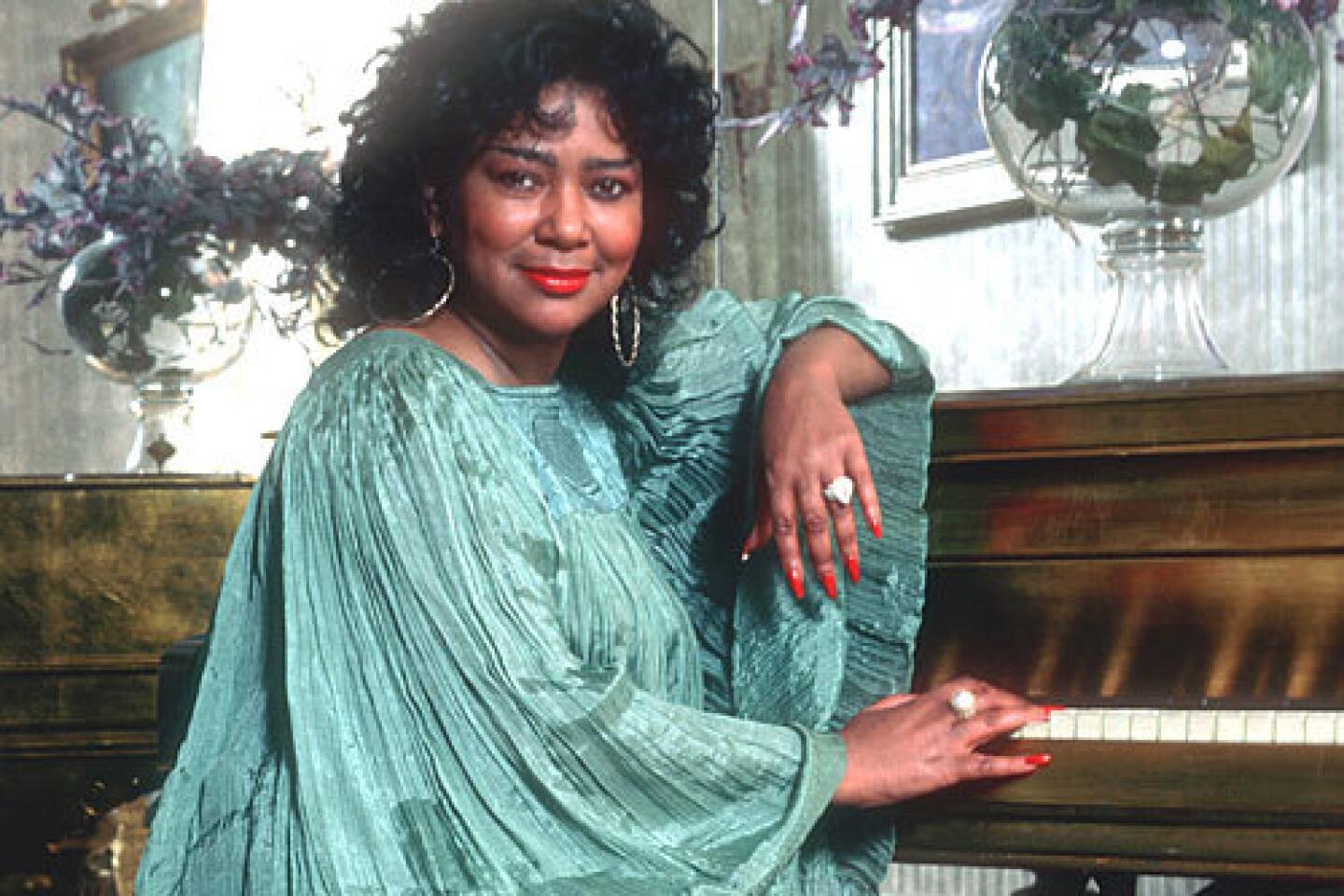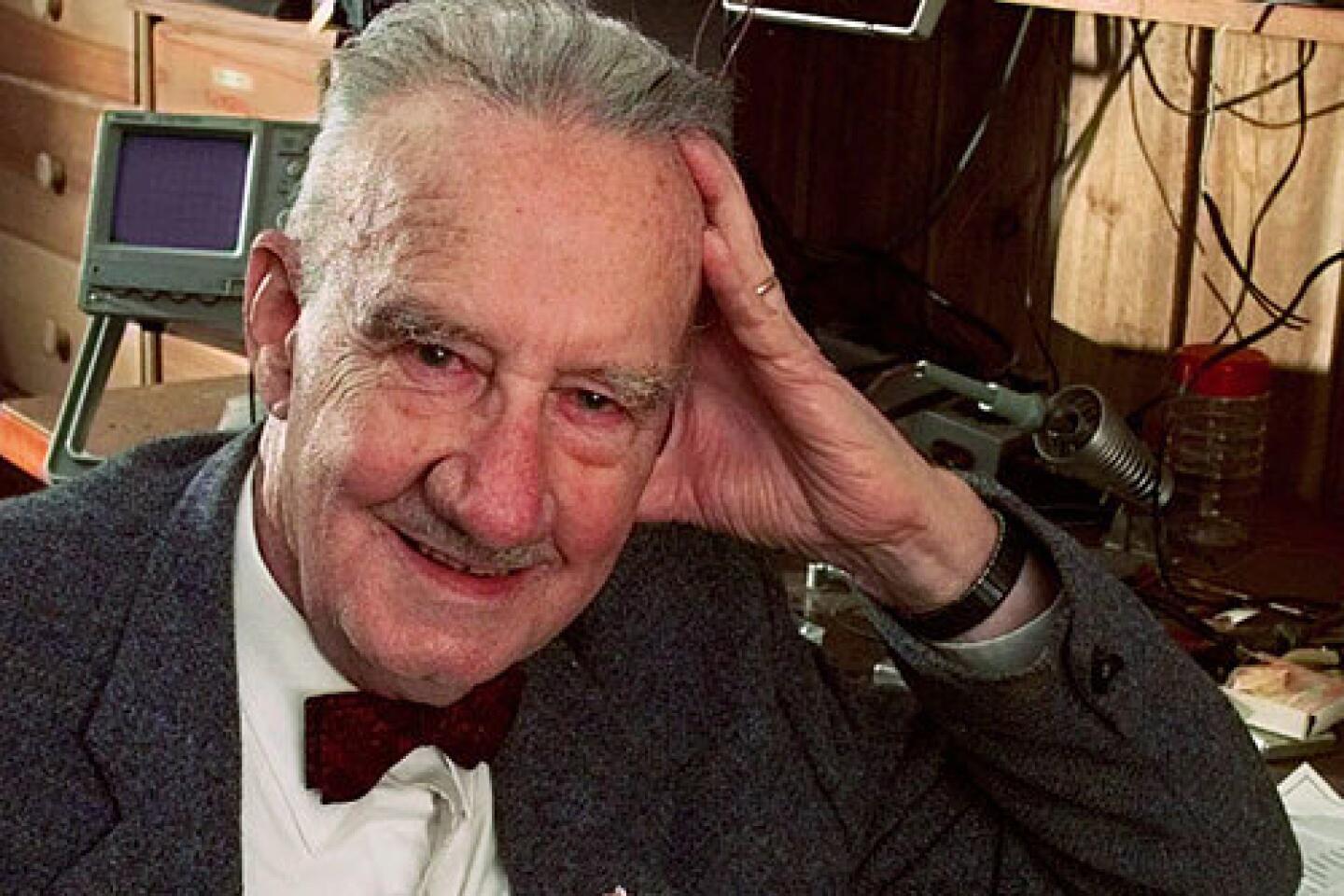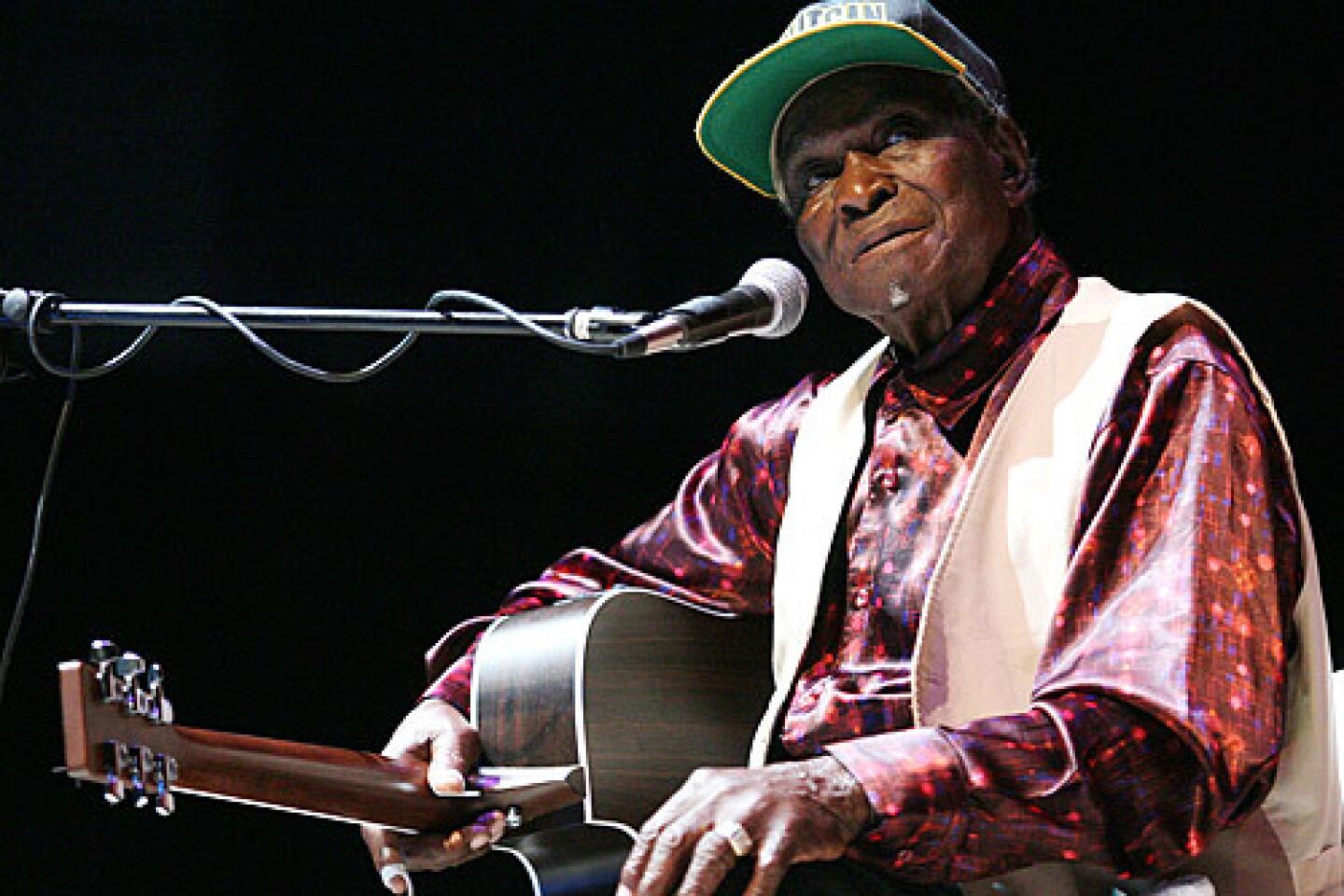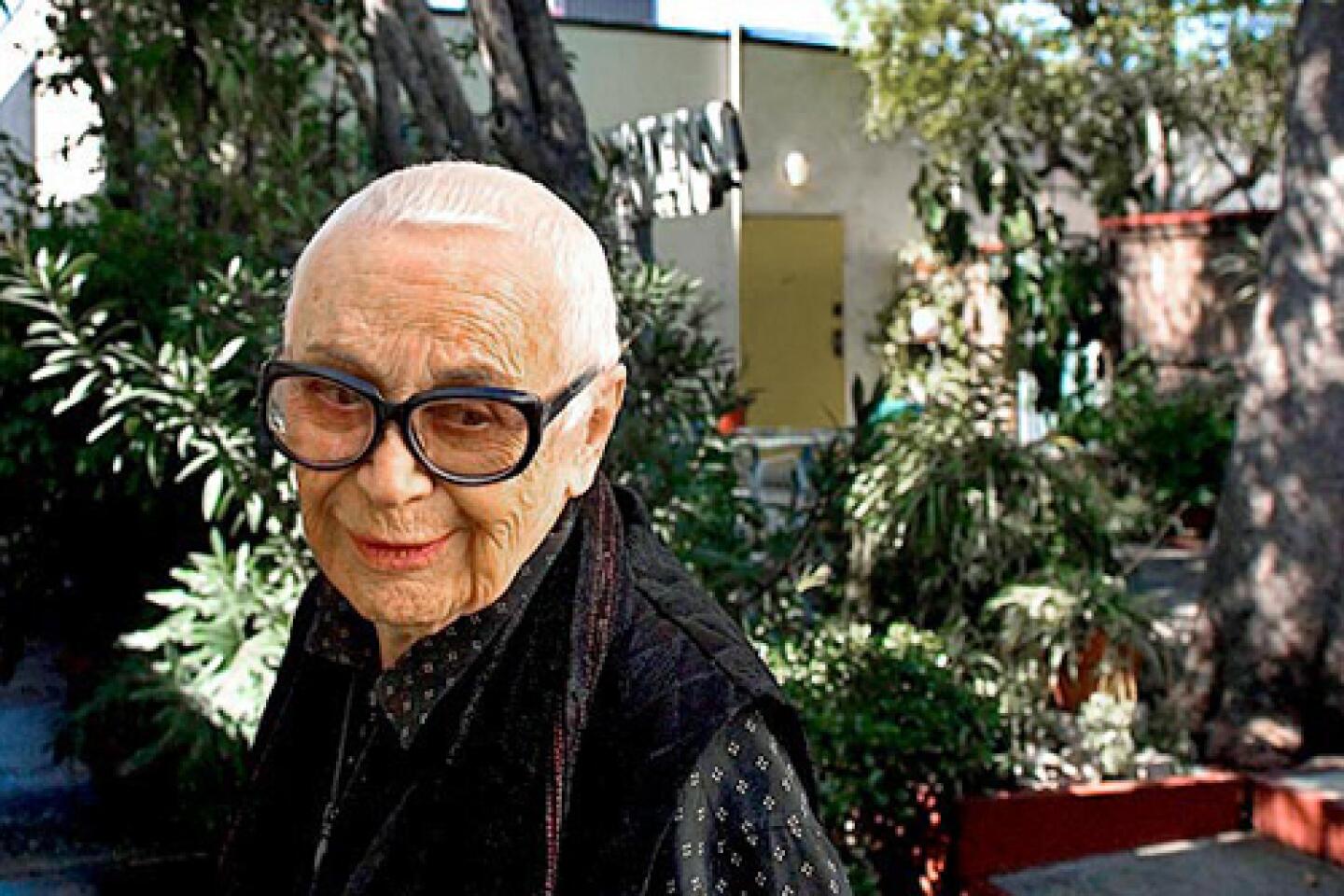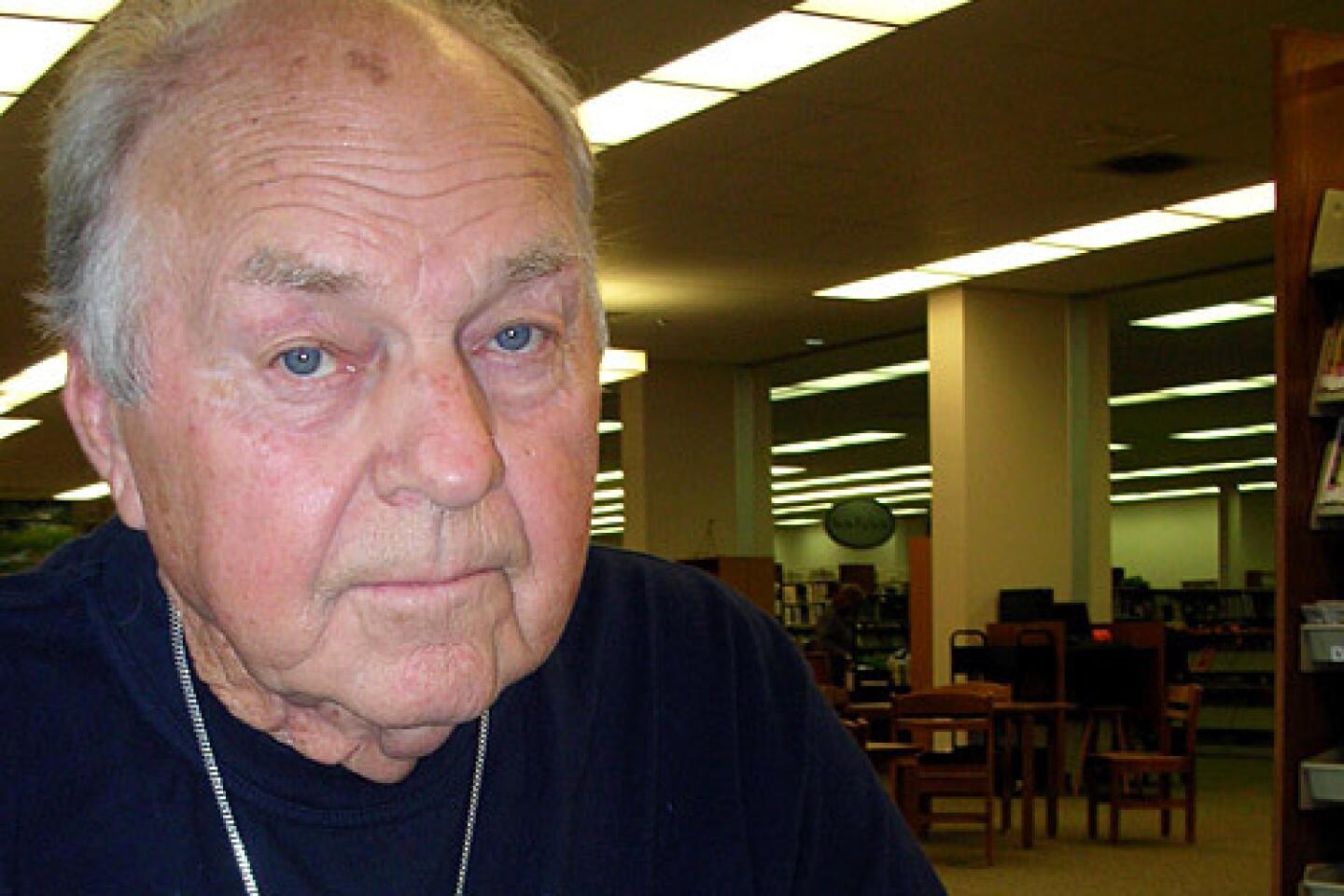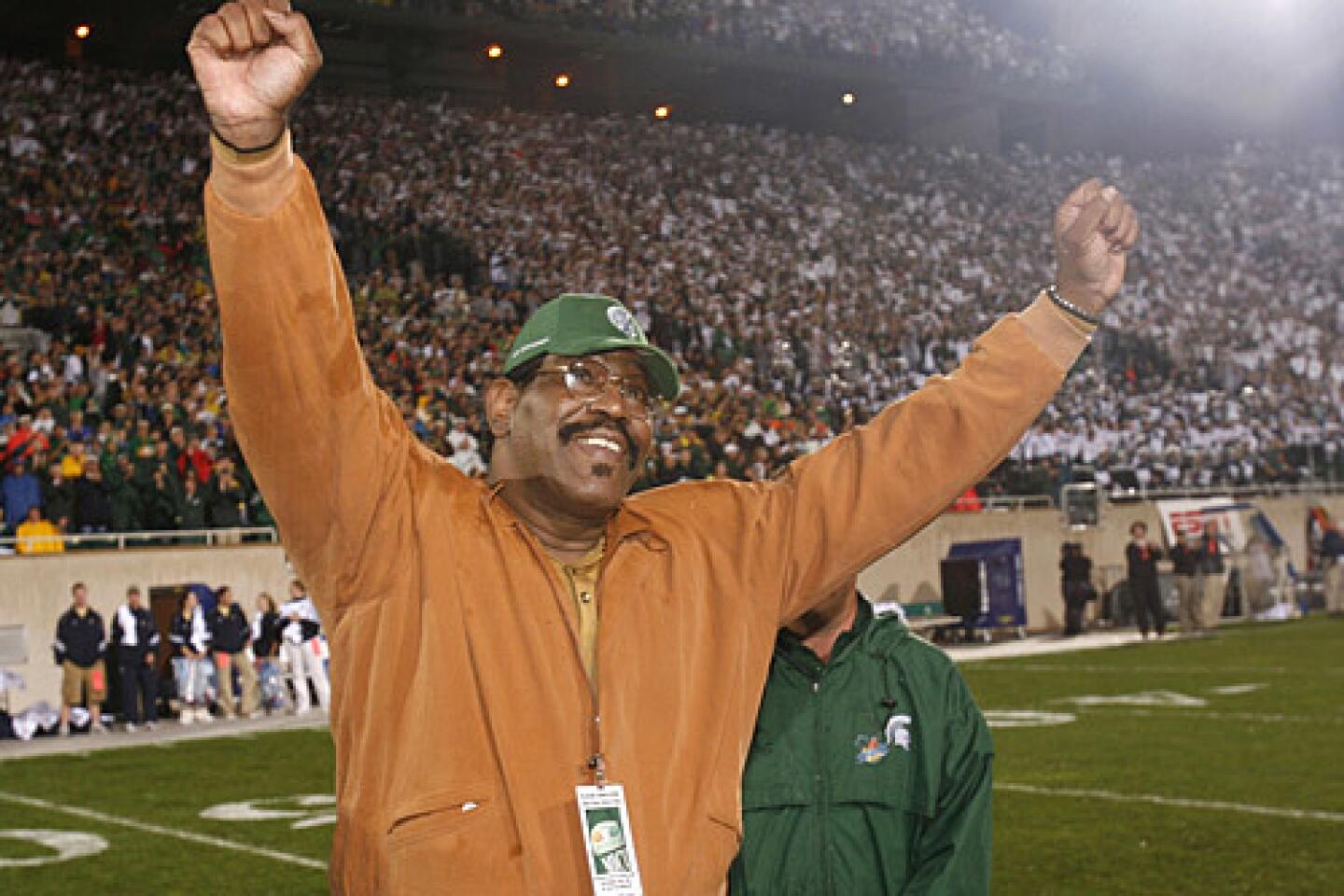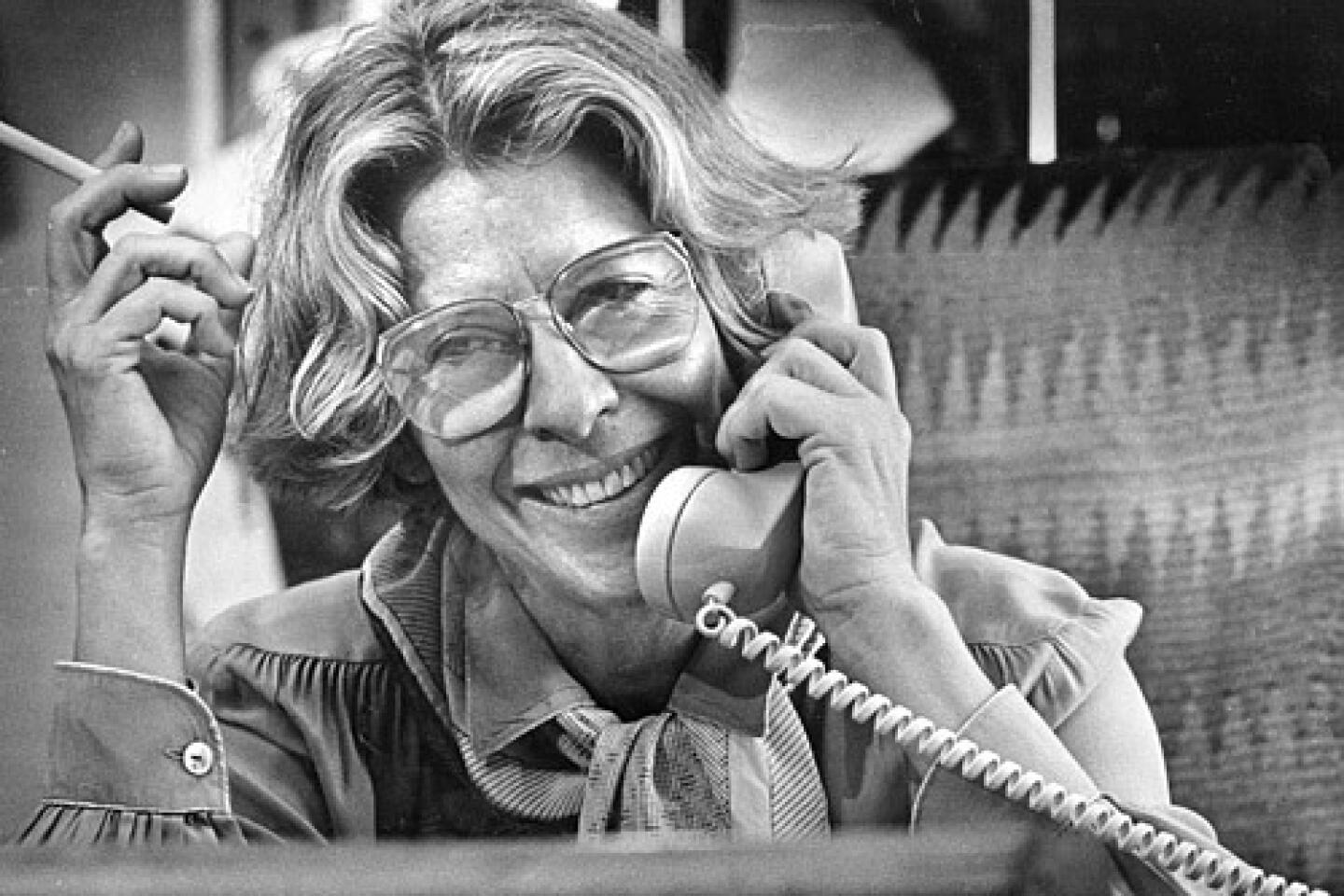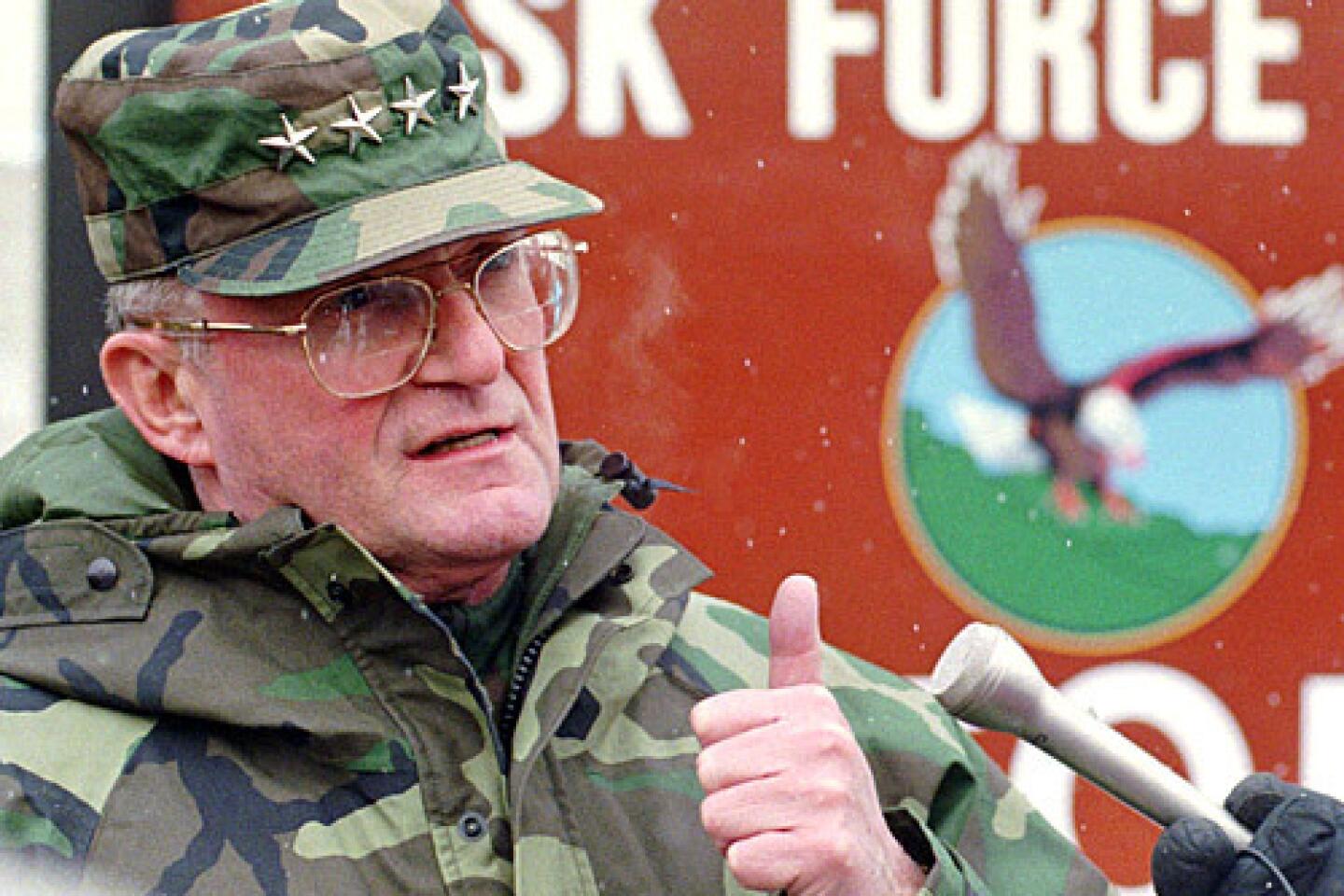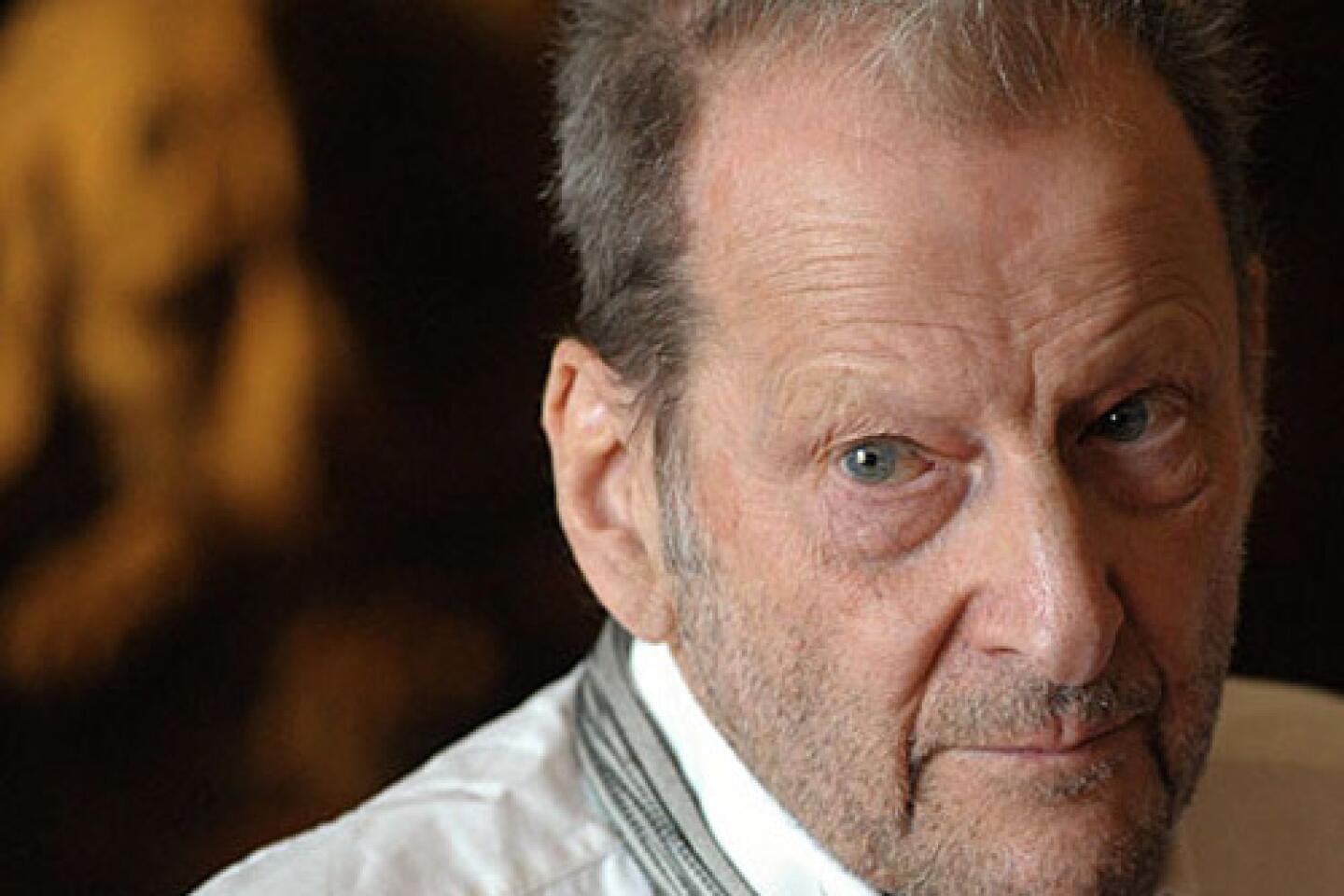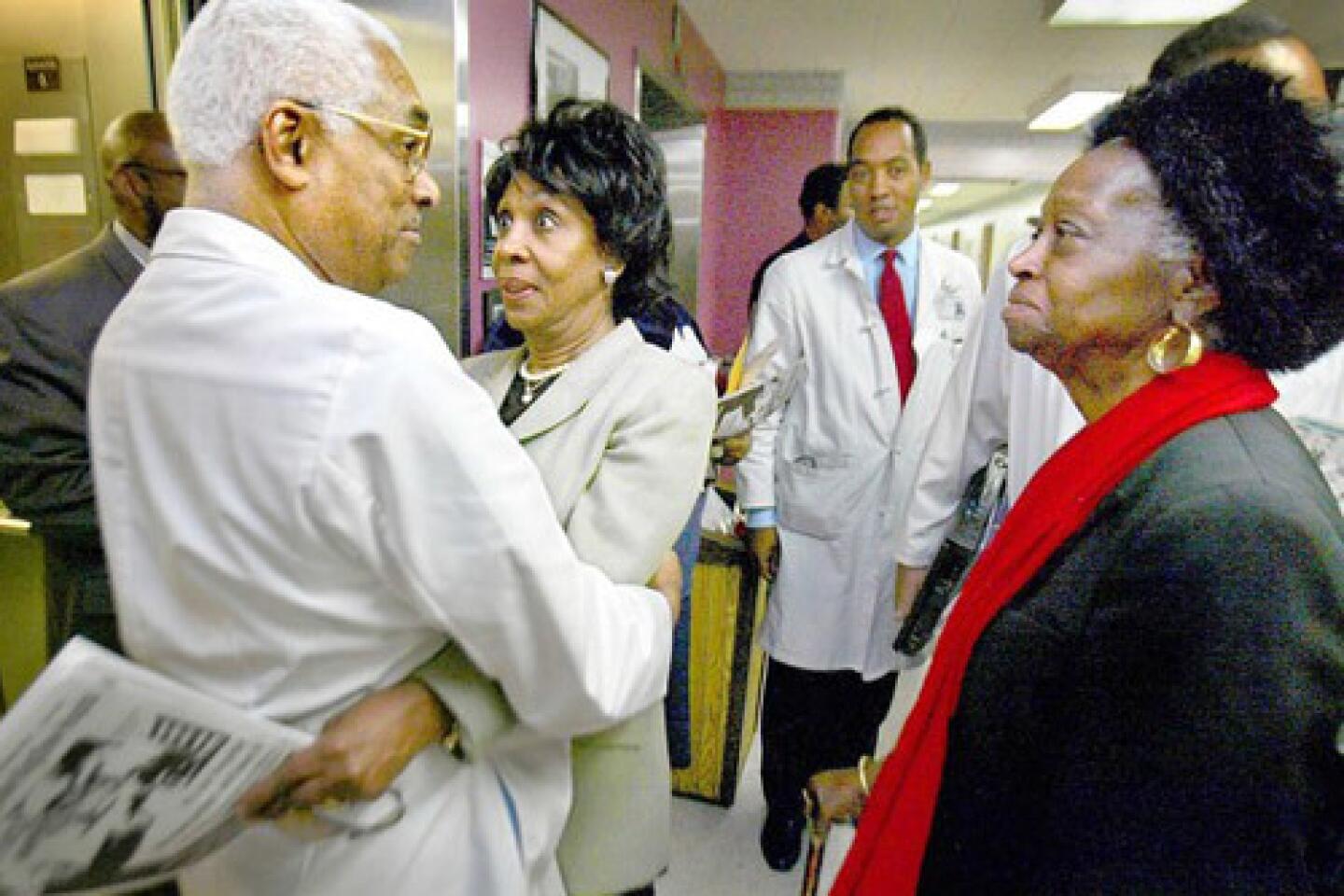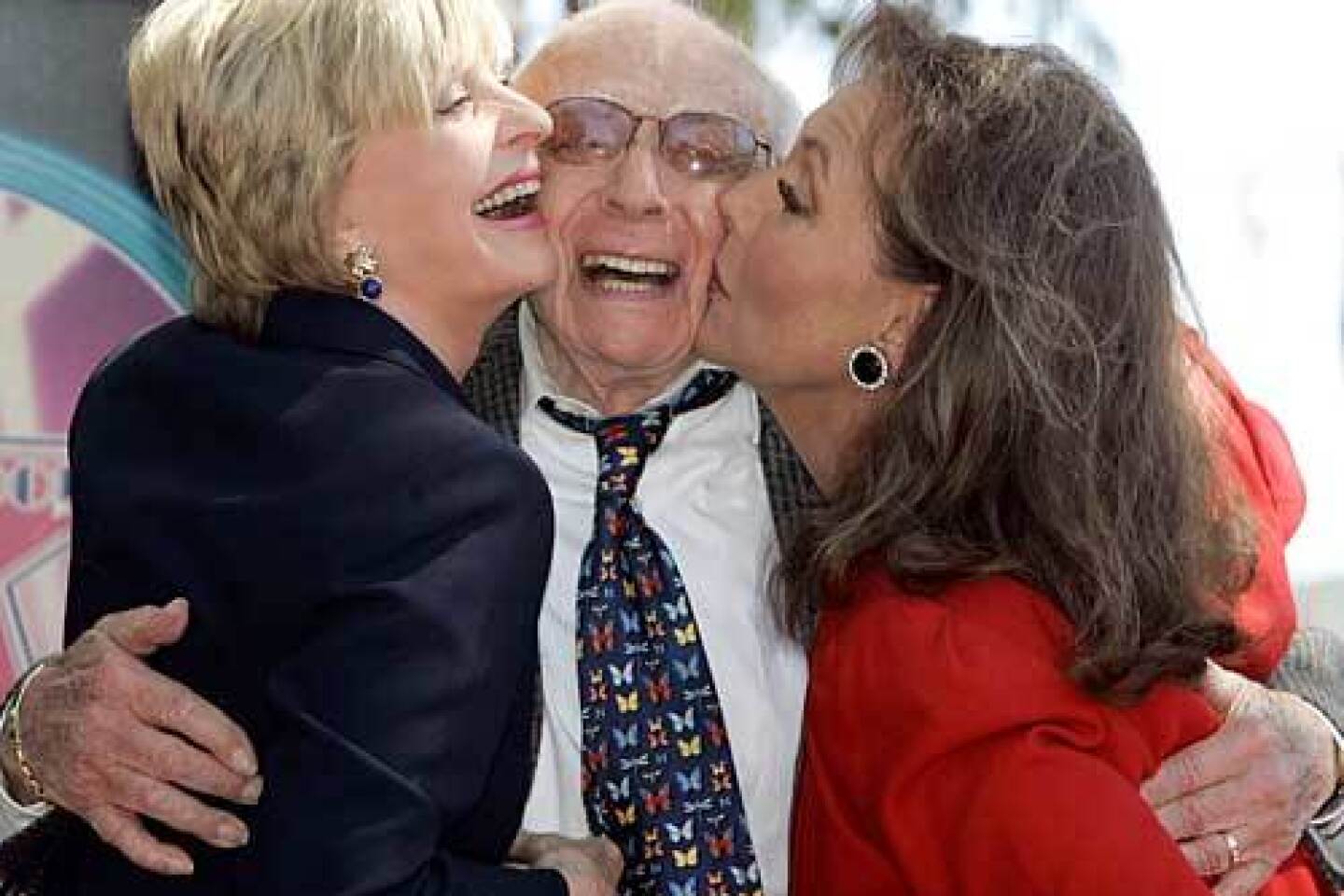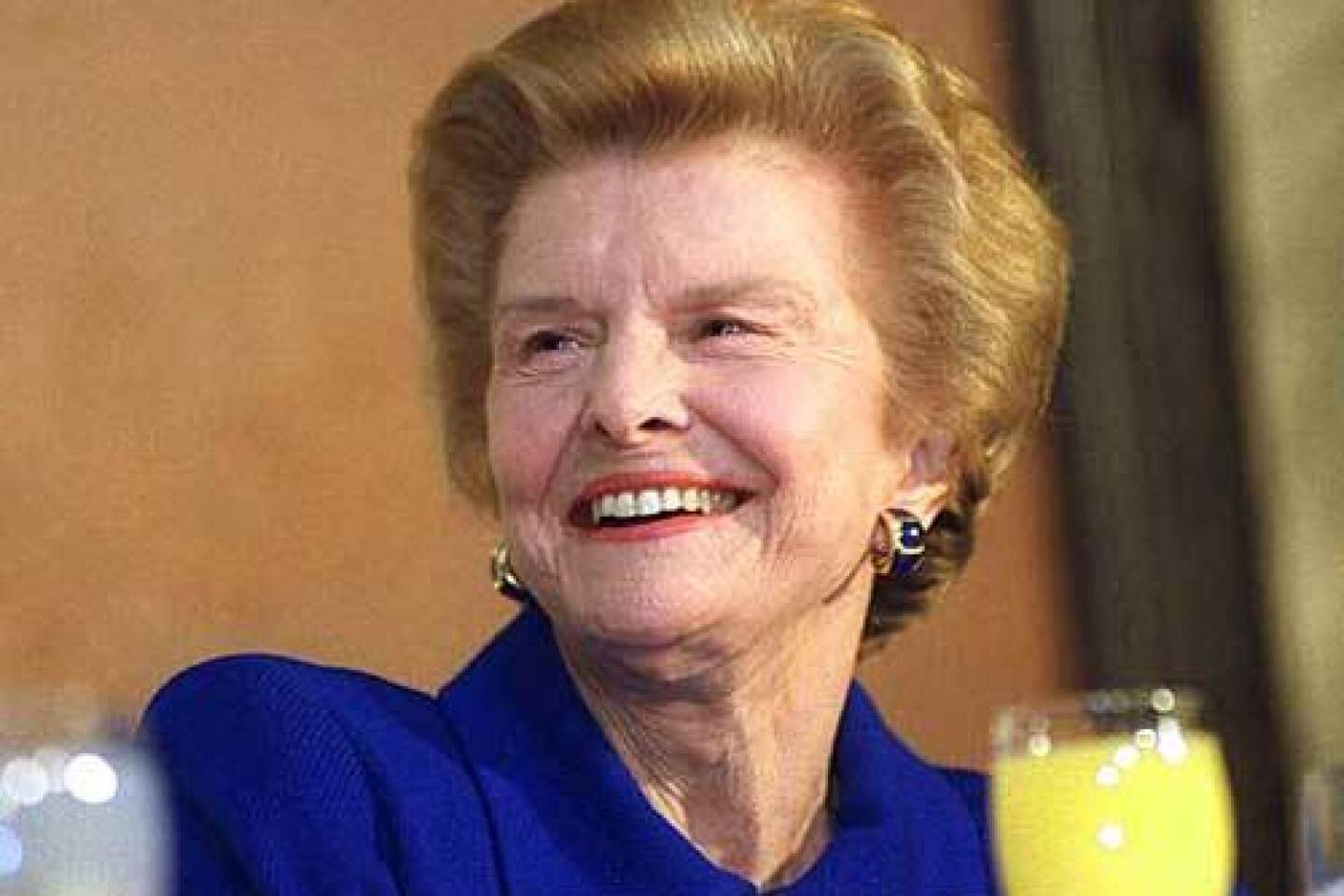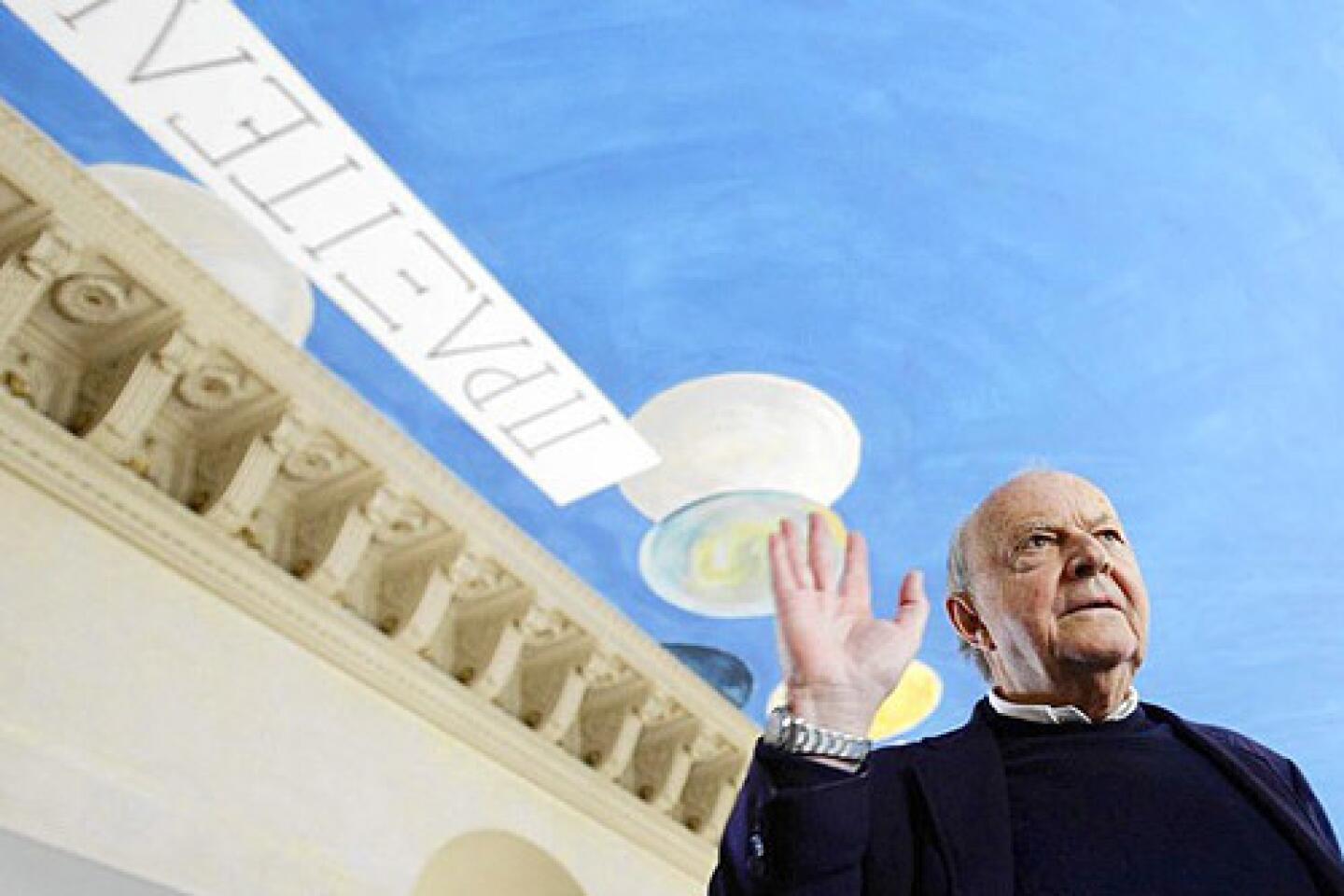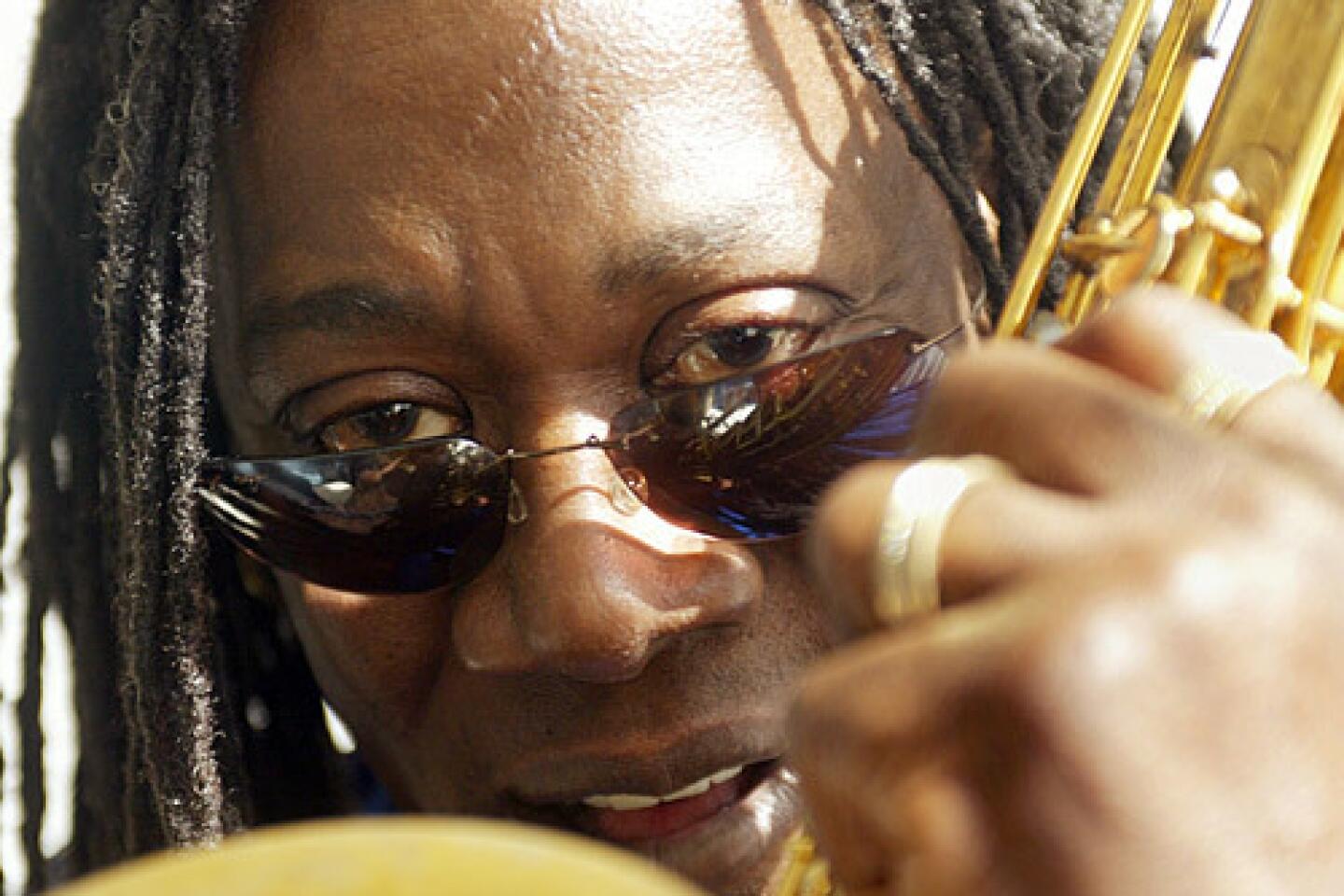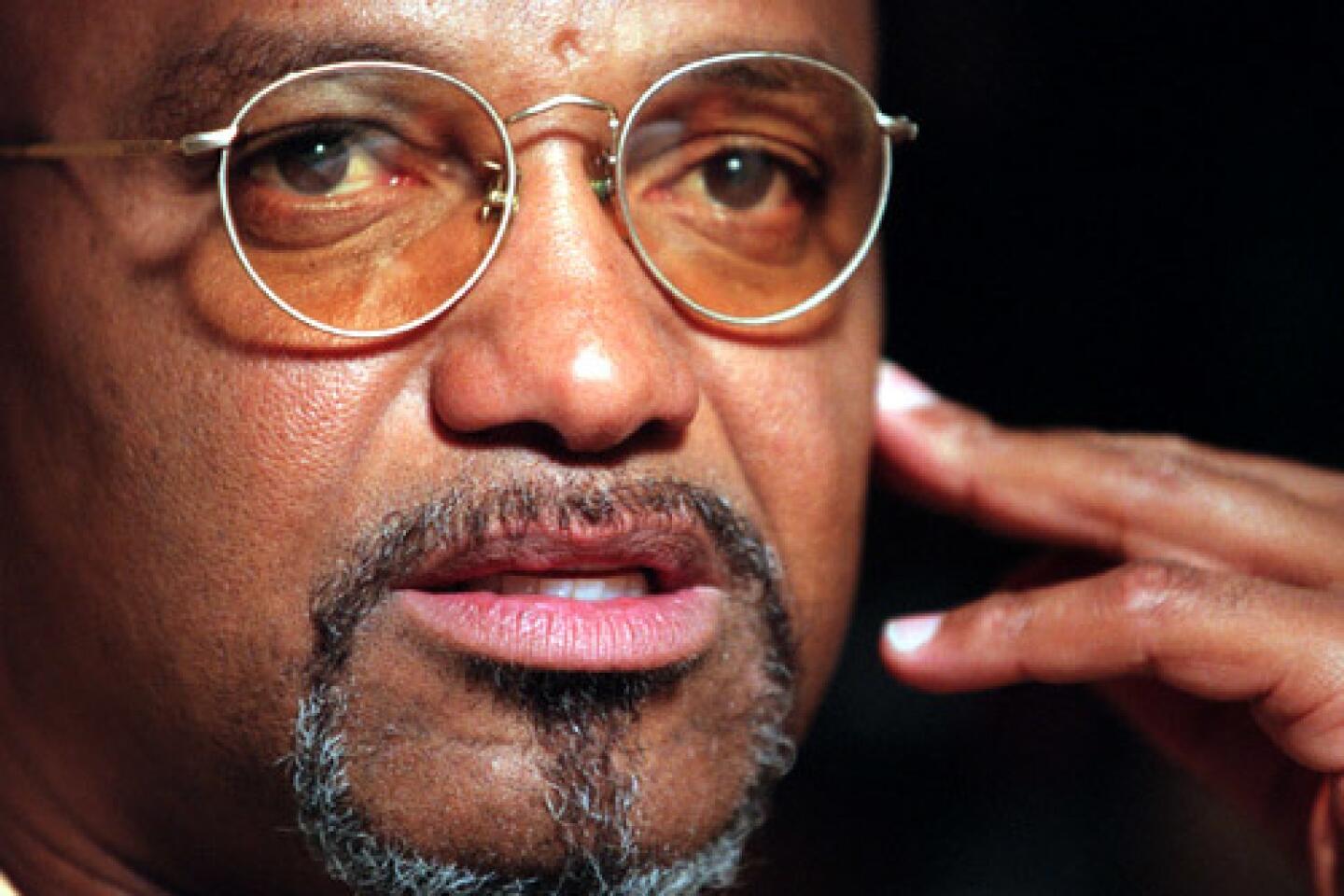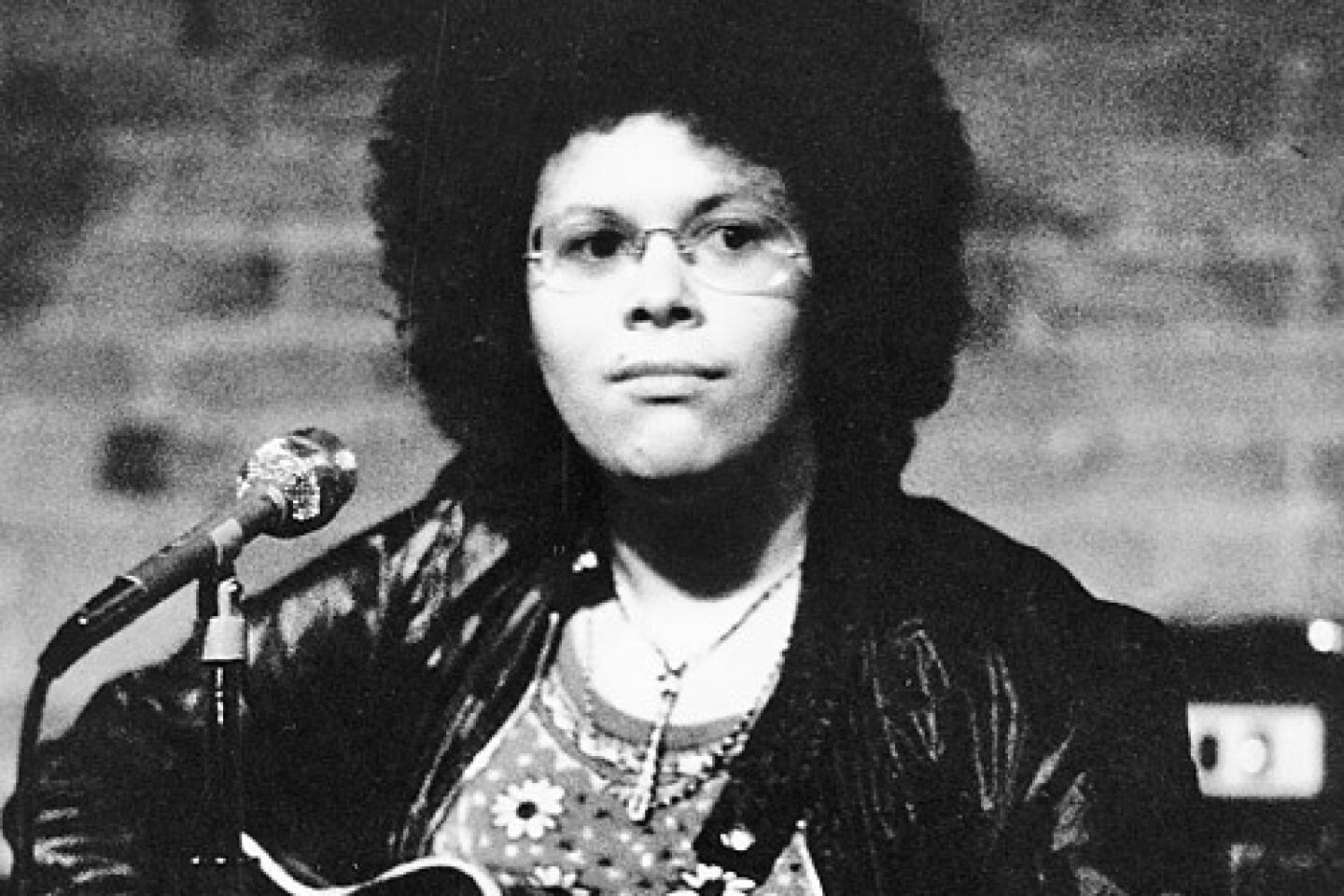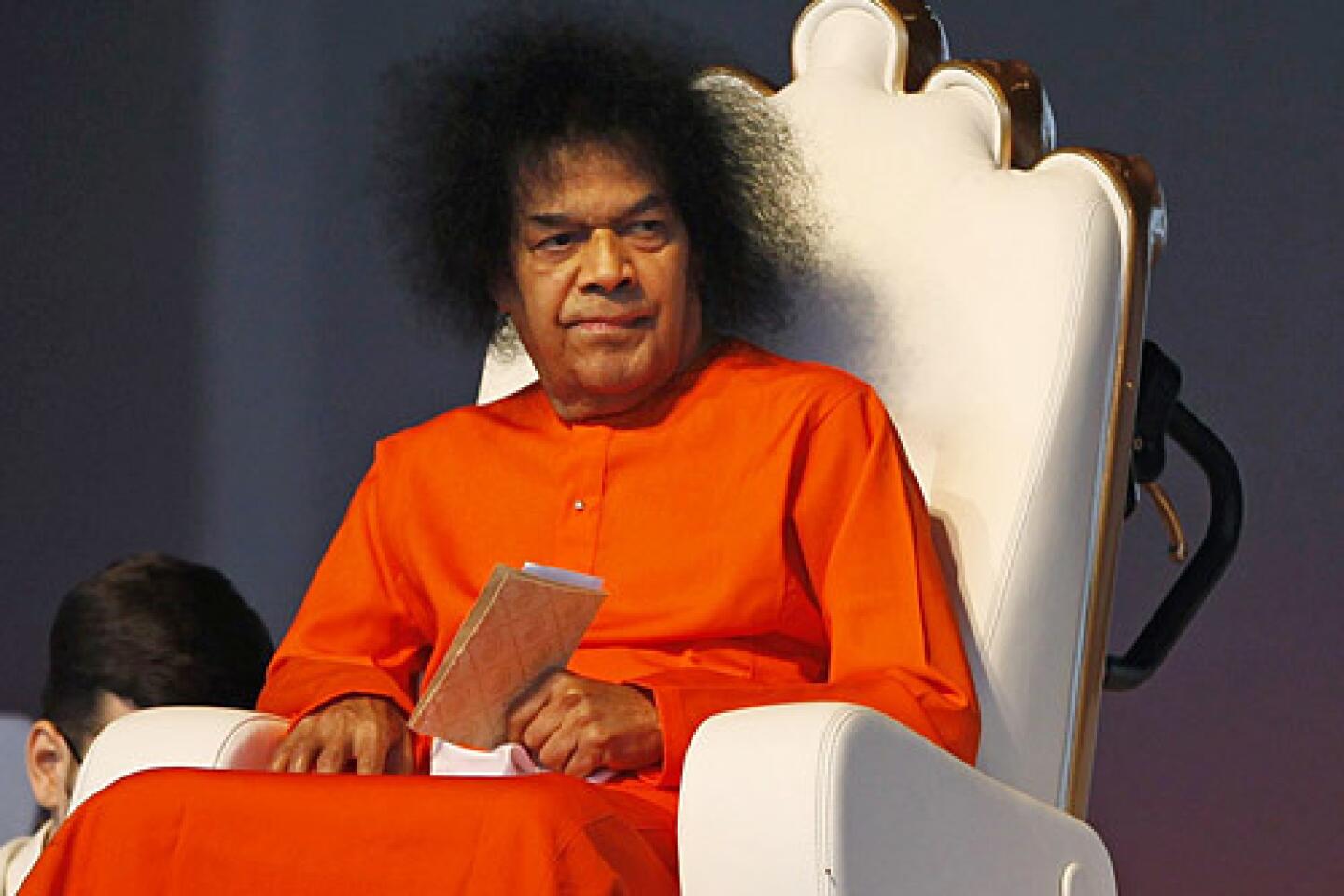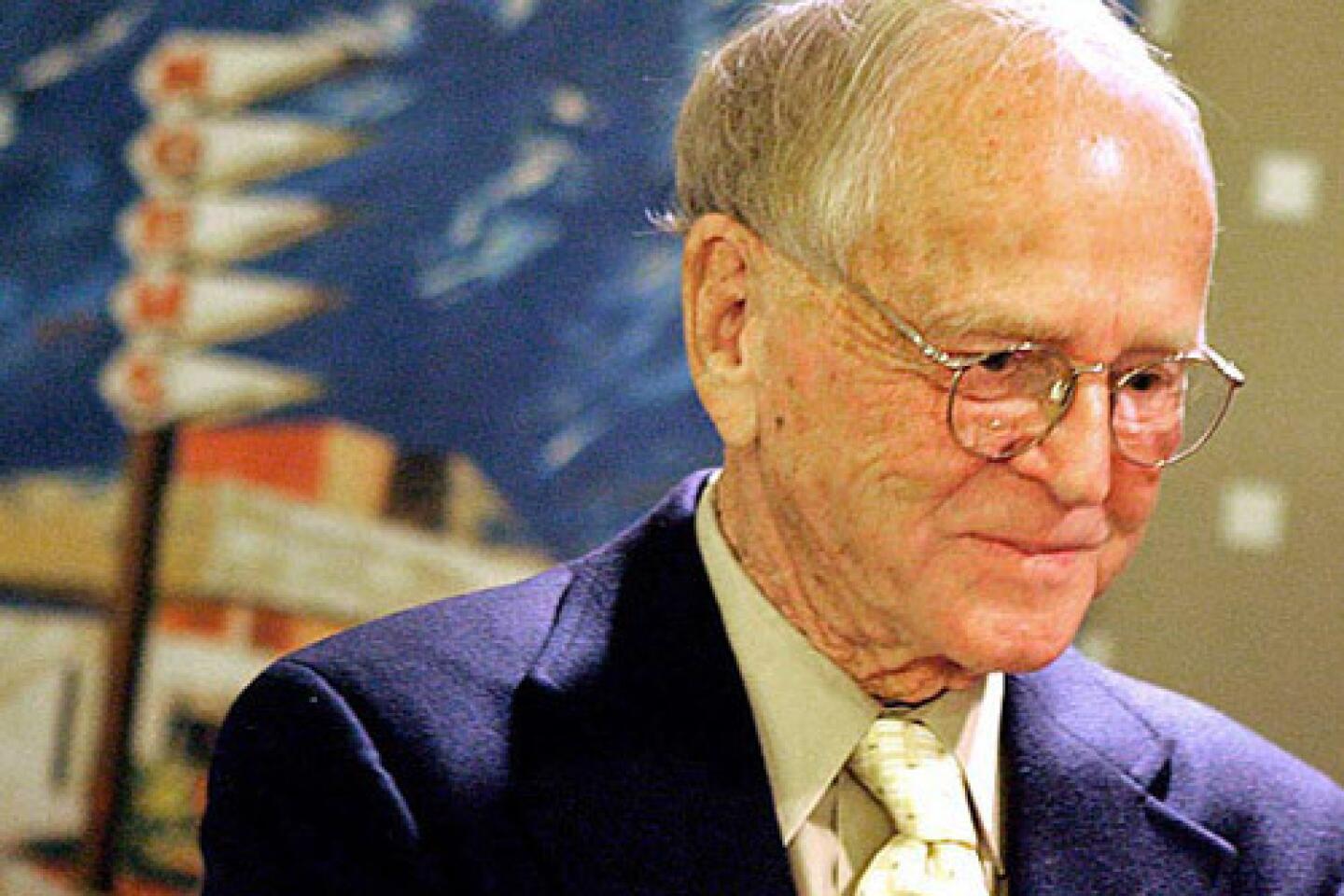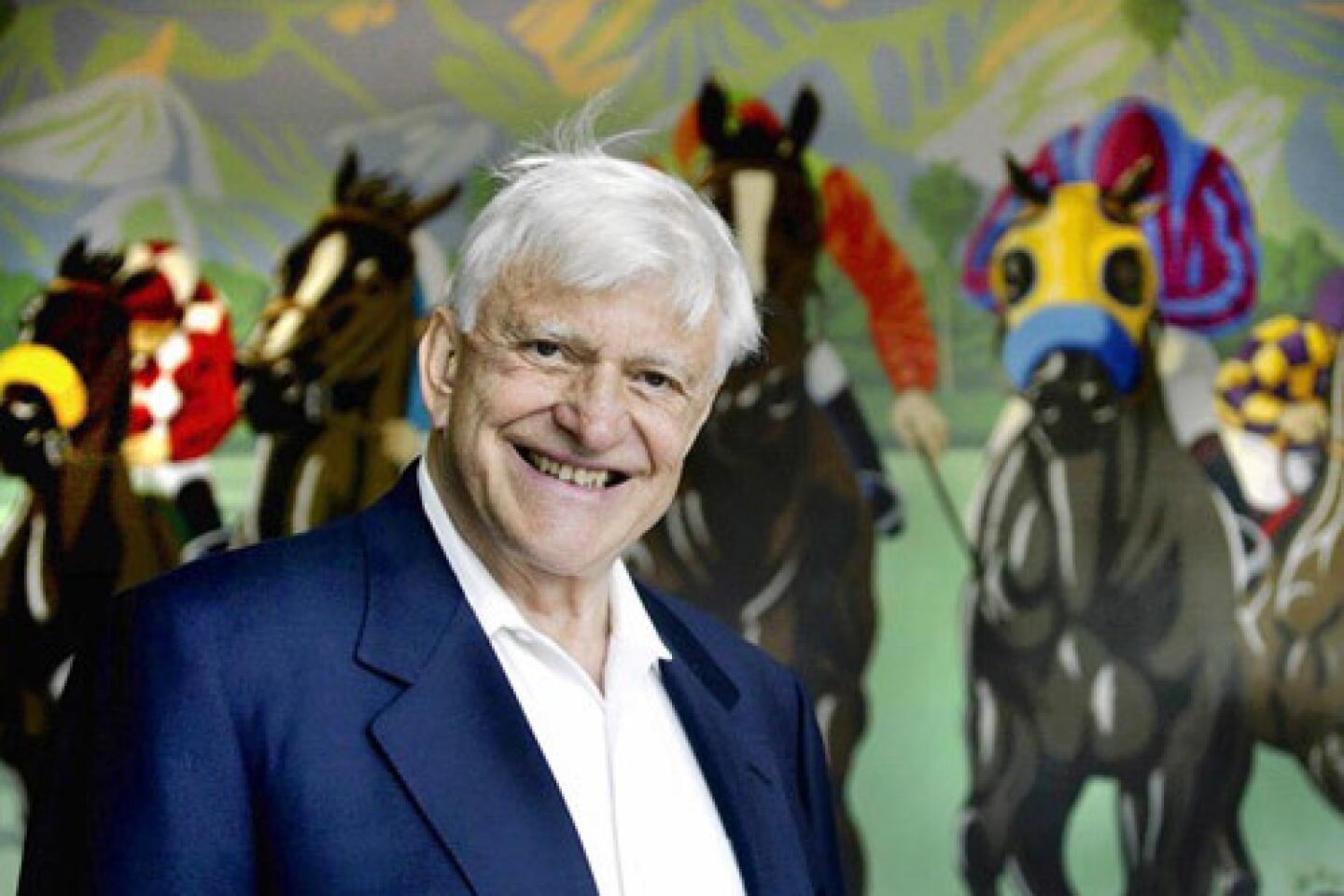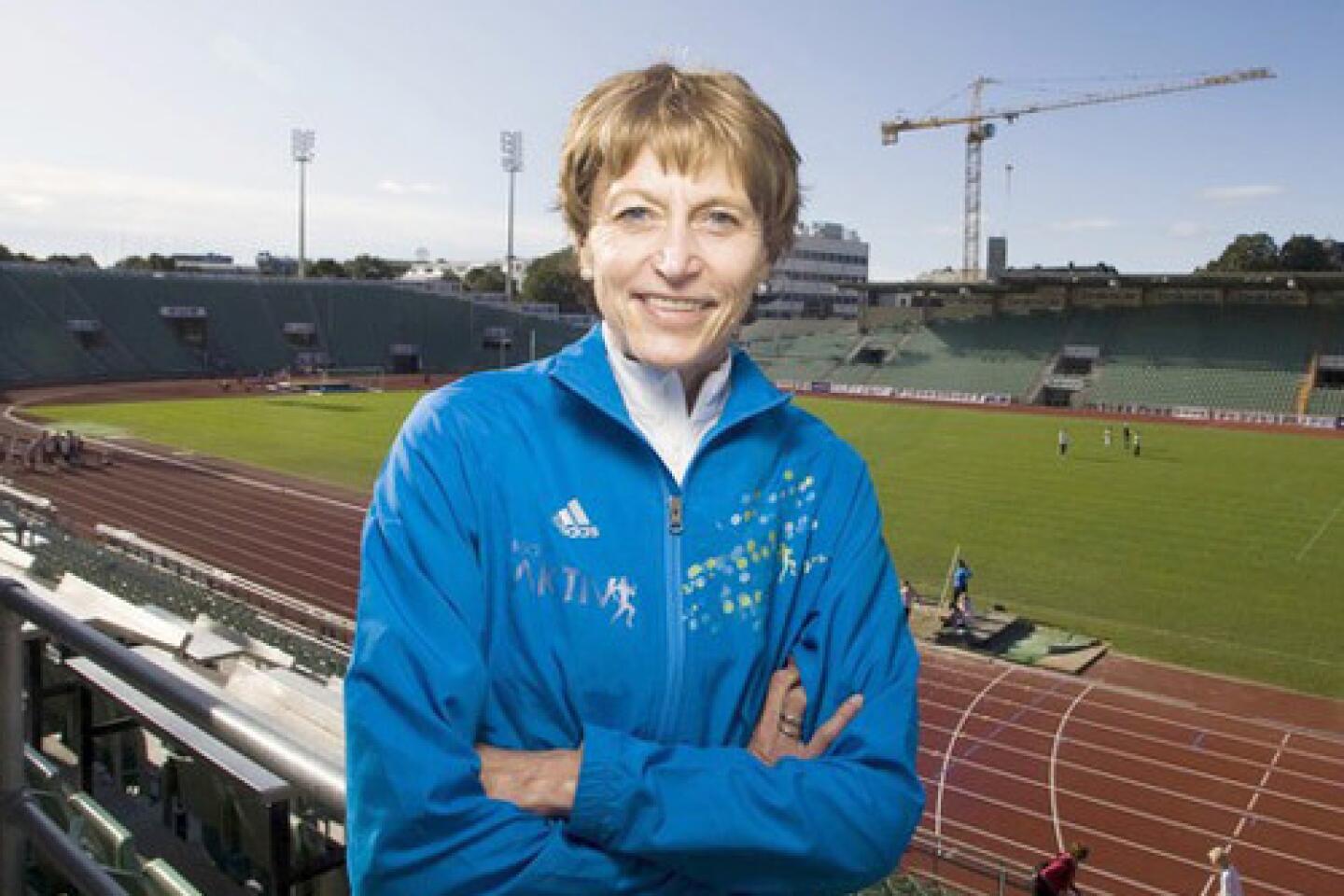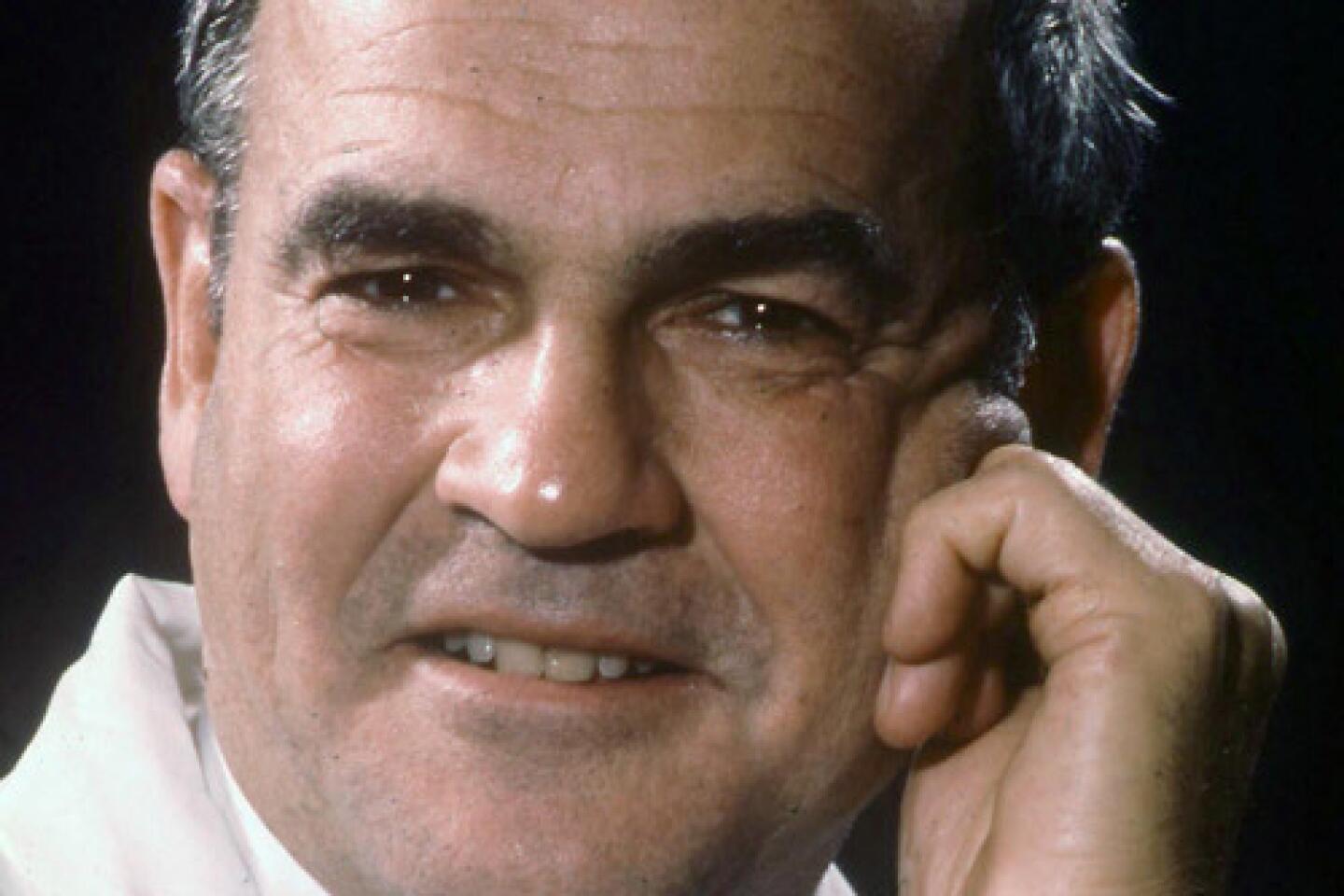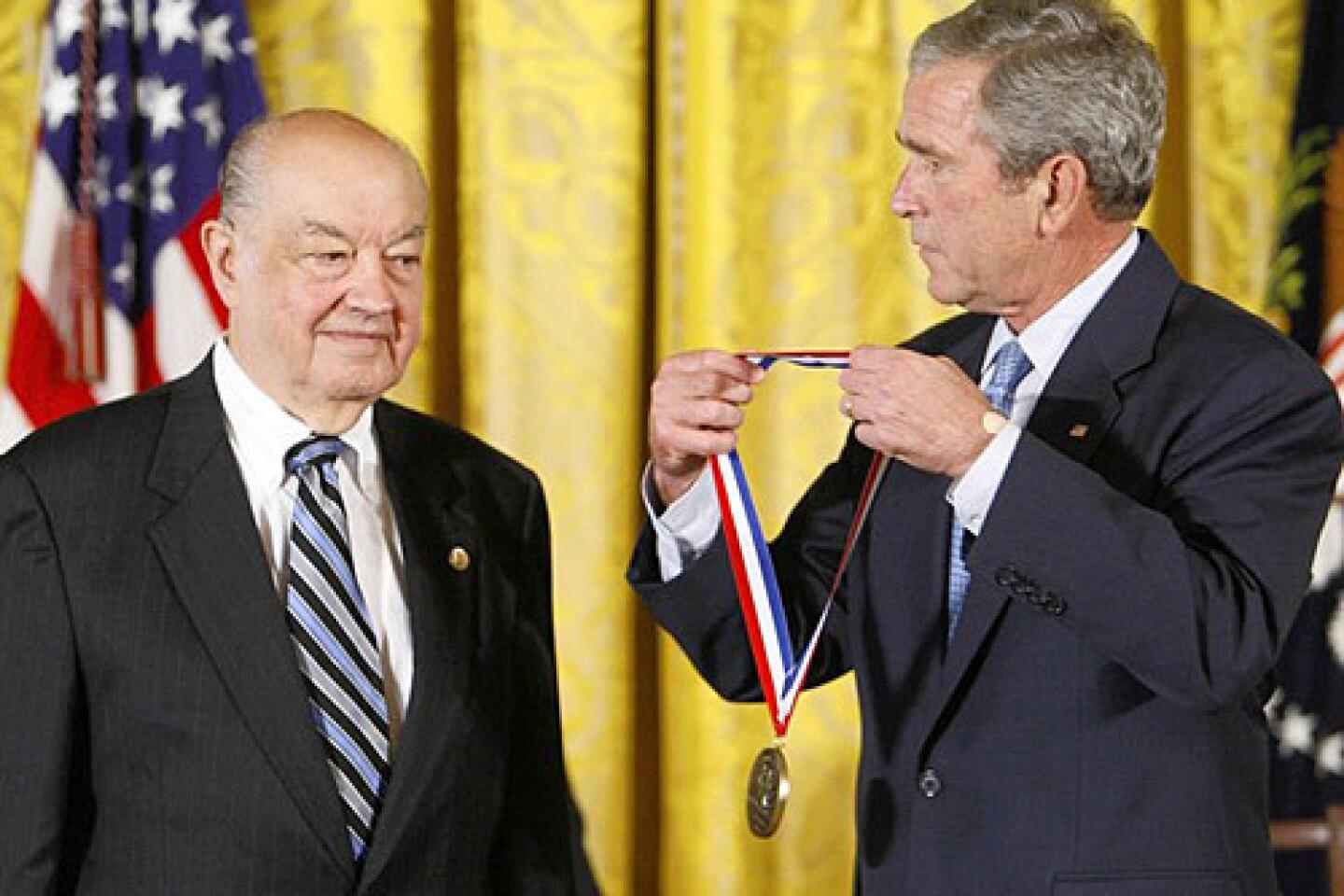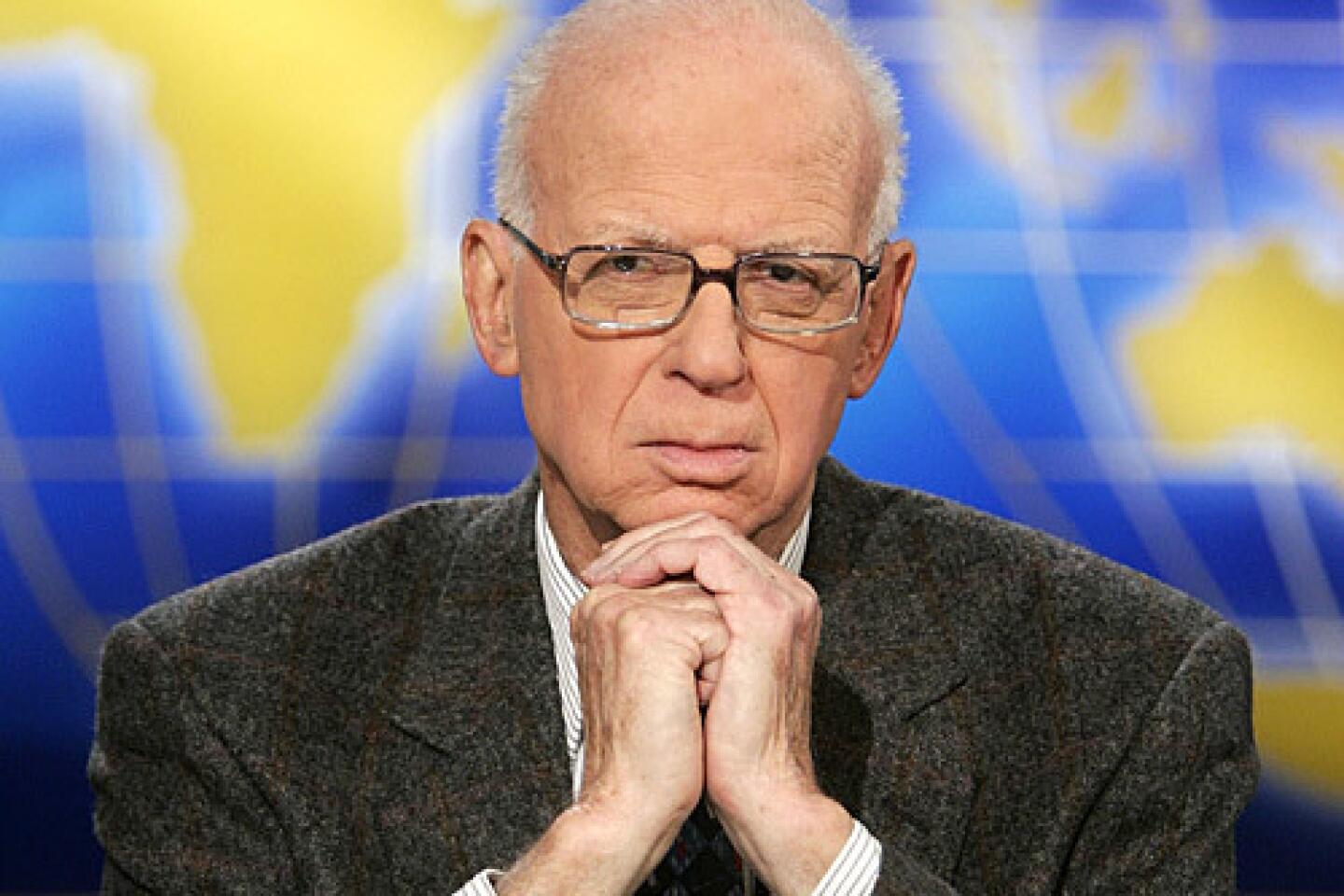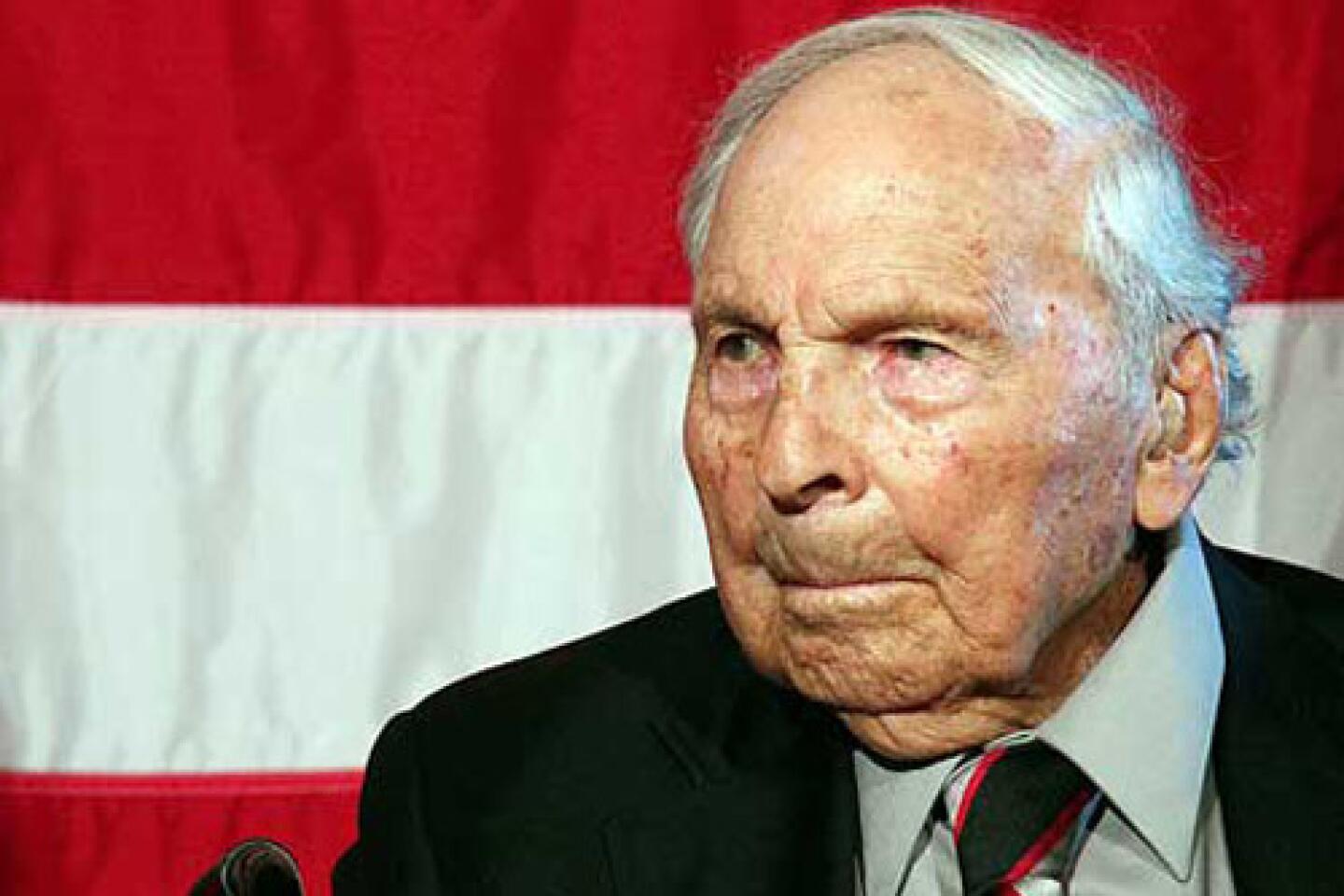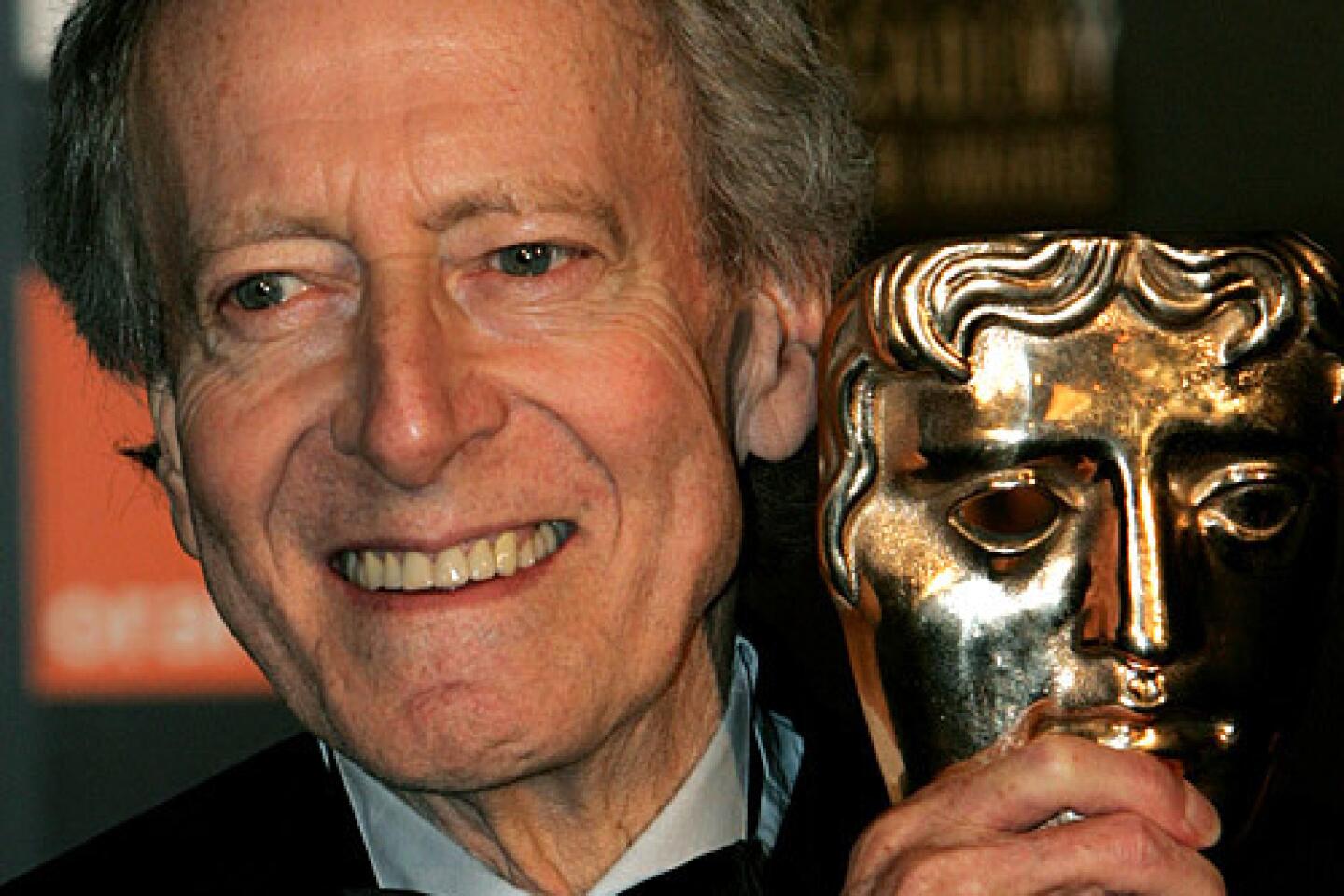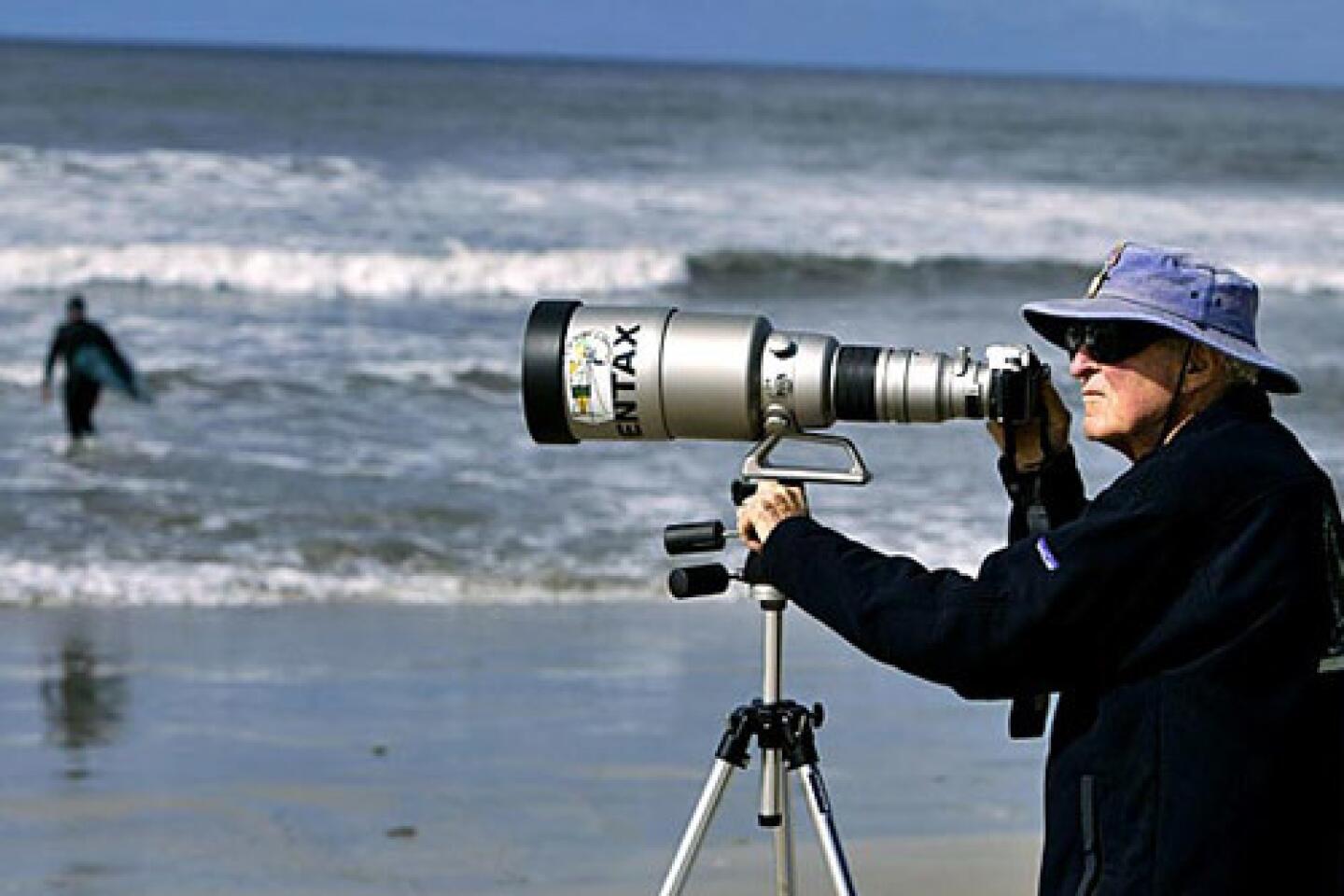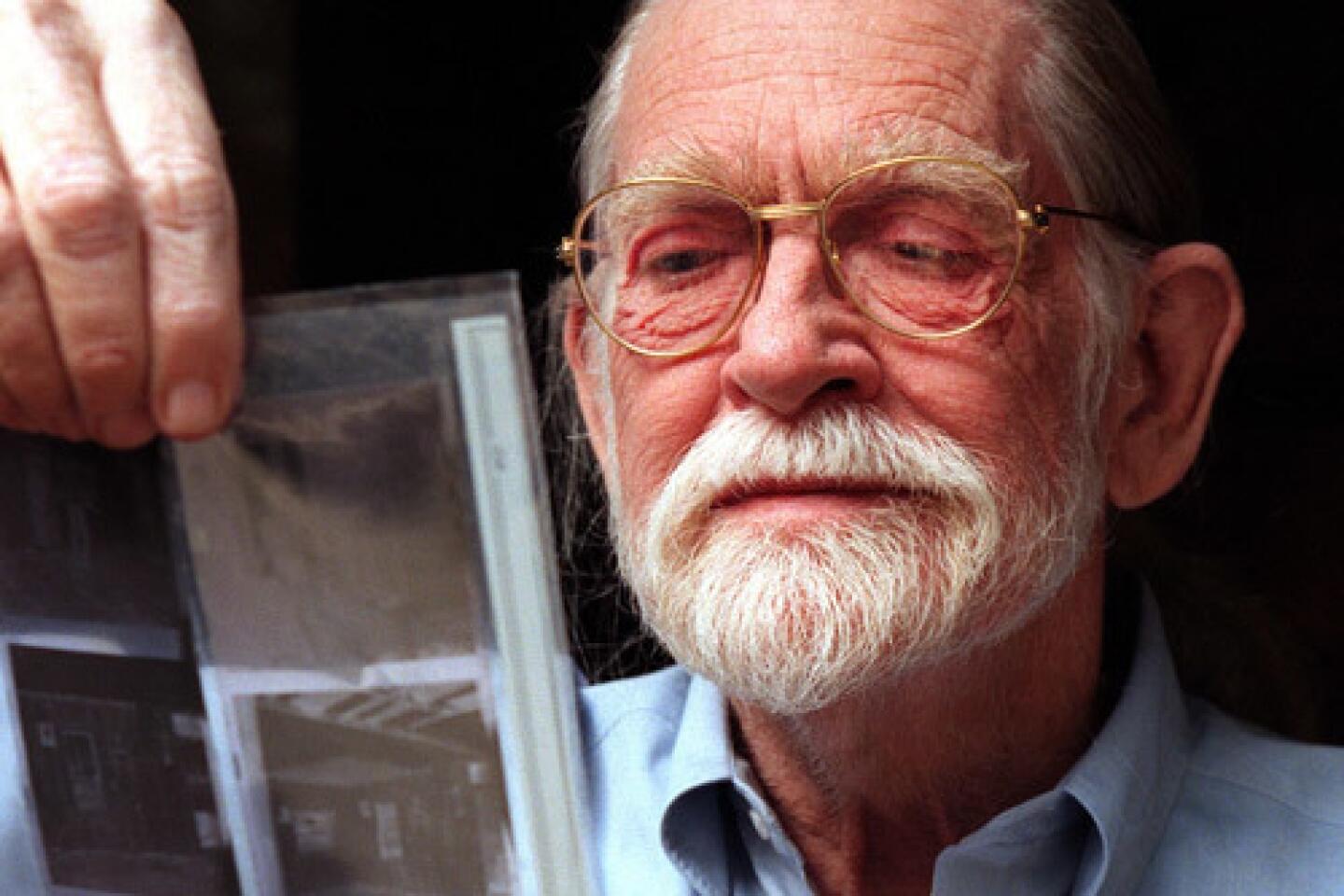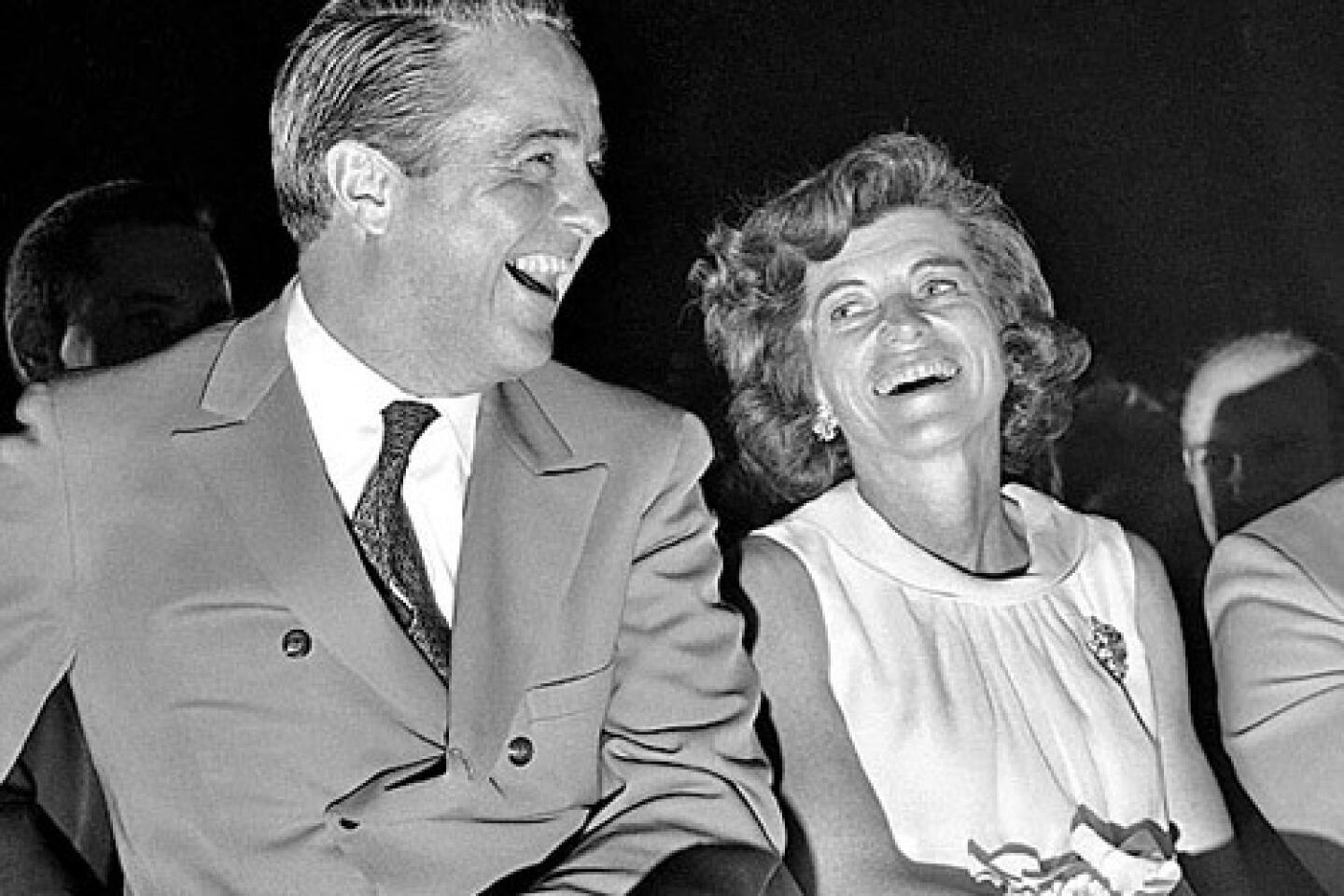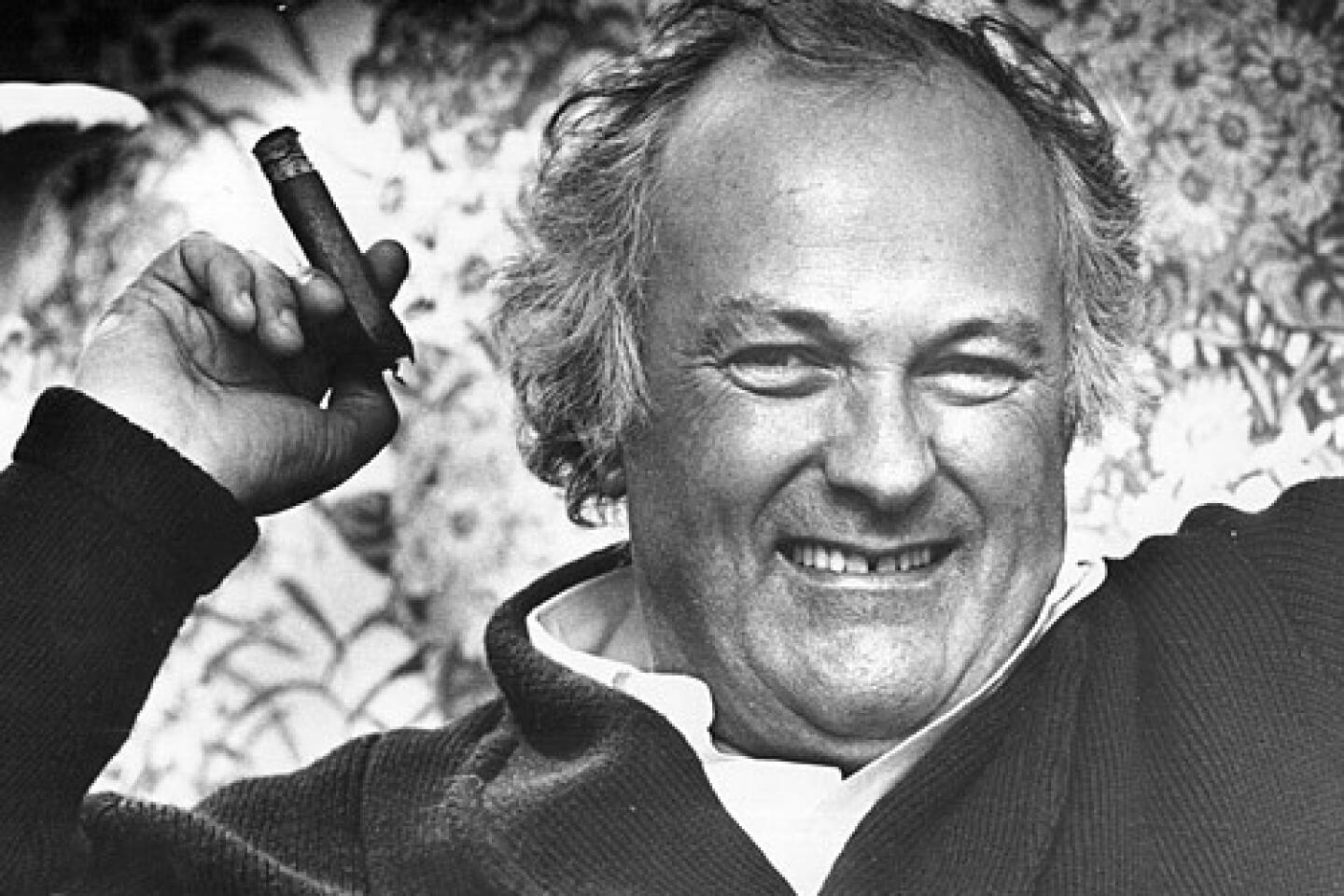Cy Twombly dies at 83; internationally renowned American artist
- Share via
Cy Twombly, an internationally renowned American artist whose lyrically evocative signature works blur the boundaries of painting, drawing and handwritten poetry, has died. He was 83.
Twombly died Tuesday in Rome, where he had spent much of his time since the late 1950s. The cause of death was not immediately known, but he had suffered from cancer, the Associated Press reported.
An independent figure who likened his art to an encapsulation of the creative experience, Twombly was sometimes dismissed as a minor talent or disparaged as a doodler whose loosely fashioned images, loopy texts and skeins of colored line looked too easy. But he rose to the pinnacle of the art world.
Permanent displays of his work were installed at the Philadelphia Museum of Art in 1989 and at the Menil Collection in Houston in 1995. The Museum of Modern Art in New York organized a traveling retrospective exhibition of his work that appeared at the Museum of Contemporary Art in Los Angeles in 1995. Bestowed with prizes by the governments of France and Japan and the Venice Biennale in his later years, Twombly also saw his work command millions of dollars at auction. Last year, in one of his final accomplishments, he was commissioned to paint the ceiling of a large gallery of bronze sculptures at the Louvre in Paris.
“The marvelous thing about having lived so long is to have been recognized along with Jasper Johns and Robert Rauschenberg as one of the three most important American artists to emerge in the 1950s,” said Paul Schimmel, chief curator of MOCA, who worked with Twombly in conjunction with “Hand-Painted Pop,” a 1992-93 exhibition, as well as the 1995 retrospective. “While Johns and Rauschenberg were celebrated in the ‘50s and ‘60s, it took much longer for Twombly, whose achievement wasn’t so much radical as it was evolutionary.
“His work was more of a continuation of the legacies of Jackson Pollock and Willem de Kooning and other first-generation Abstract Expressionist painters,” Schimmel said. “Like Joan Mitchell, he had the challenge of establishing a voice that wasn’t seen as a sharp break with the New York School. Yet he developed a multitude of highly original approaches, including his blackboard paintings, his use of historical Roman and Greek imagery and a highly personal, highly charged form of autobiography.”
More than any other American artist, Twombly also formed a bridge between Europe and America, Schimmel said. “Through most of his life, he was far more celebrated in Europe than in the United States.”
Edward Parker Twombly Jr. was born April 25, 1928, in Lexington, Va. He was the son of Edward “Cy” Twombly, a college athletic coach who briefly played for the Chicago White Sox and got his nickname from baseball star Cy Young. “Little Cy” began painting in his youth and studied art at a string of schools, making valuable connections along the way.
He attended the School of the Museum of Fine Arts in Boston in 1948-’49, Washington and Lee University in Lexington in 1949-’50 and the Art Students League in New York in 1950-’51. Rauschenberg, whom he met at the League and who became a longtime friend, suggested that he continue his studies at Black Mountain College, a prestigious, avant-garde outpost in Beria, N.C. Twombly followed his advice in 1951-’52, working with leading Abstract Expressionists such as Robert Motherwell and Franz Kline.
Twombly’s romance with Europe began in 1952 when he won a fellowship and used it to travel abroad with Rauschenberg. The artists spent extended periods in Rome, exploring museums and antiquities, and in Morocco, where Twombly worked on an archeological dig of Roman ruins. Back home in 1953, he was drafted into the U.S. Army and worked as a cryptographer while stationed in Georgia.
On his return to civilian life, he led the art department of Southern Seminary Junior College in Buena Vista, Va., in 1955-’56. But he was eager to go back to Europe and settled in Italy in 1957. Drawing inspiration from poetry, mythology, history and the Italian landscape, he began to develop a gestural form of abstract painting and writing, as well as a metaphorical vocabulary.
Twombly married Tatiana Franchetti, an Italian artist from a wealthy, aristocratic family, in 1959. Their son, Alessandro, was born the following year.
Twombly compiled a distinguished record of exhibitions and continued to explore new avenues of expression throughout his life. The Gagosian Gallery, an international power center based in New York, opened its new space in Paris last year with an exhibition of his sculptures. Abstractions made of found objects, clay and plaster, they are painted dusty white or cast in bronze and sometimes resemble ancient artifacts.
Twombly also has provided critics with much provocative material. In a review of his retrospective at MOCA, The Times’ art critic Christopher Knight wrote: “Twombly’s gestural mark-making inevitably evokes the problem of how to visually represent speech; the paintings’ most obvious likeness is to graffiti-covered walls, and he often uses pencil in addition to paint. The marks comprise an expansive lexicon of handprints, tracing, big sweeps of the arm, furious doodles, languid meanders, bored inscriptions, anxious erasures and more.”
Ten years later in a New Yorker review of an exhibition of drawings at the Whitney Museum of American Art in Manhattan, Peter Schjeldahl observed: “Twombly’s best art entails an odd transaction: confessing fundamental bewilderment in return for being granted a flare of exaltation.”
Muchnic is a former Los Angeles Times staff writer.
More to Read
Start your day right
Sign up for Essential California for the L.A. Times biggest news, features and recommendations in your inbox six days a week.
You may occasionally receive promotional content from the Los Angeles Times.
